How to Give Orders or Instructions in English
In our everyday life, we need to ask people around us to do something, either in the form of orders, instructions, requests, or suggestions. Sometimes, we face difficulties providing clear instructions due to not knowing appropriate English expressions. The way we order someone to do something may sound rude and inappropriate to people if we don’t know how to do it politely.
In this post, I’ll discuss some expressions you can use to give orders and instructions in English in your everyday life.
Generally, in informal situations, we give orders or instructions with imperative expressions, whereas in formal cases, we ask someone to do something indirectly using modal verbs rather than giving them direct order. However, using “please” or “let’s” while giving orders or instructions may help soften your expression and sound politer.
Are you looking for a book or a guide to help you learn and improve your English? You may try English Made Easy Volume One: A New ESL Approach: Learning English Through Pictures (Amazon Link) .

Table of Contents
Giving orders or instructions using “let’s” with imperatives, giving orders or instructions using “please” with imperatives, giving orders or instructions using “please” with modals, giving orders or instructions indirectly, giving orders or instructions using ordinal & connecting adverbs, giving orders or instructions using question tag, a sample conversation on giving orders or instructions, takeaway words, in conclusion, 10 frequently asked questions related to giving orders or instructions in english.
A comparison table shows different ways of giving the same orders or instructions.
Giving Orders or Instructions Using Imperative Sentences

The most common way to give orders or instructions is by using imperative sentences . Besides, we also use imperative expressions to make requests , give proposals, and encourage someone.
Imperative sentences usually begin with a verb, and in most cases, the grammatical subject is not visible in the sentence. We can have imperatives in both affirmative and negative forms. The negative imperative sentences typically begin with “Don’t” or “Do not.”Let’s see some examples.
Examples of Affirmative Imperative sentences to Give Orders or Instructions
- Pass the curry.
- Call him right now
- Go to the other room.
- Send me the e-mail as soon as possible.
Examples of Negative Imperative Sentences to Give Orders or Instructions
- Don’t go outside.
- Do not go there alone.
- Don’t accept the proposal
- Don’t kick the ball in this way.
- Don’t talk too loudly in this room.
- Do not send anyone any product without my consent.
From the above examples, we can clearly understand the structure and purpose of imperative sentences. All the sentences have no visible subject. However, you can imagine the subject “you” at the beginning of such sentences, which will still be meaningful. For examples:
- [You] take it.
- [You] come with me.
- [You] submit the proposal.
- [You] send me the previous schedule.

Notice minutely. All the examples given as imperative sentences above have the subject, 2 nd person “you.” There is no involvement of the speaker, 1 st person, “I.”
However, you can also involve the speaker in the order or instructions by using “Let’s.” Here are some examples.
- Let’s take him with us.
- Let’s complete the assignments now.
- Let’s bake a chocolate muffin cake together.
- Let’s watch the remaining episodes of the series.
Note: All the imperative sentences are usually in the present simple form. We ask someone to do something in the current time, though they may do it now or later. And remember! We use such plain imperative sentences in casual/informal situations.
In the later part of the post, we will look at some polite expressions used to give orders or instructions in formal situations.

As imperative sentences are direct orders or instructions, they may sound rude to many people. So, it would be best to soften your expression while giving orders or instructions.
However, simply putting a “Please” at the beginning or end of any imperative sentence may help sound politer. It’ll undoubtedly sound better and more convincing as well as you can use it in formal situations.
- Please talk to him immediately.
- Leave the document here, please.
- Please send him the message as early as possible.
- Go and bring something for me to eat, please.
Giving Orders or Instructions Using Modal Verbs

To give orders or instructions to someone, we can use modal verbs to sound polite. Once you use modal verbs to give orders, it may sound like you are making a request or offering something , though originally it’s an order.
People will usually not reject you if you ask someone to do something politely. And no matter whether you are in a formal or casual situation, politeness is the key. Let’s see some example sentences of orders and instructions using modal verbs.
- Can you do it now?
- Would you go there?
- Will you stop?
- Could you make a cup of tea for me?
- It will help if you go there.
- It would be best if you could do it for me.
- I was hoping you could complete the assignment by tonight.
Though the above sentences are in the form of questions, they are orders in the disguise of requests. Don’t they sound better than the imperative sentences?
We know that modals can help sound polite while asking someone to do something. Well! You can sound even politer by putting a “please” with modals while giving any orders or instructions. For example:
- Would you please send the e-mail to HR?
- Could you please get something for me to drink?
- Can you please tell him to call me?
- Will you please come here at once?
- Would you please place the table here?
Note: “Could” and “Would” are more formal than “Can” And “Will.”
Being very direct may sound harsh while giving orders or instructions. You can use some indirect approaches to get something done by someone. Here are some examples. If you know some more expressions like them, you can share them in the comment box to help others learn.
- If you have some time on your hand, the committee wants you to stay.
- I would like to have you help me with the project.
- If possible, collect all the bills by tomorrow.
- Is it possible to finish the presentation in 15 minutes?
- Is there any way out of hiring a car now?
- Is it ok if you are given the responsibilities of another department?
- Do you think you can make all the arrangements by yourself?

While giving someone instructions or directions, you can use ordinal adverbs . It’ll help the person to follow the sequence. You can also use connecting adverbs to bring together different steps. Use of words like “first,” “secondly,” “in the beginning,” “then,” etc., helps a lot, mainly when you describe a process.
Here are some examples.
- Remove the wire first. Place the monitor then.
- Firstly, call Riyad and seek permission to open it.
- Don’t go for desserts in the beginning. Have some appetizers first.
- Do it at the end. Not now.
One very common way of giving orders or instructions is using a question tag . This type of sentence helps you give order or instruction and get the listener’s consent. You can get to know whether the person is ready to follow your order or not. Let’s see some examples.
- Cook something for us, will you?
- Sing that song for us, can you?
- Don’t go there again, will you?
- You take him to school, will you?
- Take good care of her, won’t you?
Event Manager: Hello, Good Morning! Dream Events – How may I help you?
Ashton: Hi there. This is Ashton from Smallville. I’m planning to throw a party for my sister’s birthday next week. I need a good place and some nice arrangements.
EM: You’re at the right place, sir. Is it going to be a big party?
Ashton: Oh, not really… We may call roughly thirty people. Would you suggest something for that, please?
EM: Of course. We have a lovely place for family parties and ceremonies. We can arrange cozy sittings for your guests. The room has an AC… so no sweats.
Ashton: What about decoration? Please, make sure there are no foam sprays … My mom’s allergic to that.
EM: I’ll keep that note. However, we can provide you with both simplistic and vibrant decorations – whichever you like.
Ashton: Well, my sis loves colors, so I’ll choose a top-end decoration for her.
EM: Awesome. Would you bring the food yourself, sir? We have a…
Ashton: Oh no, please, don’t bother. I’ll take care of that. Just gimme a hygienic space where I can keep them before the party starts.
EM: No worries. We have a nice pantry where you can keep your ordered food… Uh oh… what about the cake? Are you bringing it as well?
Ashton: Sure. I’ve already ordered it. Now, send me a bill to this email address, so I can make an advance, will you?
Roughly (adverb) = not precisely or specifically
Cozy (adjective) = being comfortable
Vibrant (adjective) = very colorful or consisting of too many bright colors
Top-end (adjective) = something of a high quality
Hygienic (adjective) = free of germs, dirt, or pollution
Pantry (noun) = a place where one can store food items
Whether you are an office boss or a team leader, you are expected to ask people to do something rather than ordering them . Your polite expressions may motivate your juniors and help boost them up.
While giving orders or instructions, you should maintain a polite tone and body language besides good expressions.
1. Is there a difference between giving orders and giving instructions?
Yes. Orders are more direct and authoritative, while instructions provide a detailed step-by-step guide on how to do something.
2. How can I give clear instructions?
Be specific, use simple language, and break down the task into manageable steps. It’s also helpful to check for understanding by asking the person to repeat back what they’ve heard.
3. Is it okay to use imperatives when giving orders?
Yes, imperatives are often used when giving orders, e.g., “Close the door,” “Sit down.” However, tone and context are essential to ensure you don’t come off as rude.
4. How can I ensure that my instructions are understood?
After giving instructions, ask the person to summarize what you’ve said or ask if they have any questions.
5. What are some polite phrases I can use when giving orders?
Phrases like “Could you,” “Would you mind,” or “Please” can soften the command, making it sound more like a request.
6. Is body language important when giving instructions?
Absolutely. Positive and open body language can make the receiver more receptive. Using gestures can also help clarify your instructions.
7. How should I handle someone not following my instructions?
Address the situation calmly, ask if they understood the instructions, and offer to clarify any confusion.
8. Are visual aids helpful when giving instructions?
Yes, diagrams, charts, or any visual representation can make instructions clearer, especially for complex tasks.
9. Is the sequence important when giving instructions?
Yes, always provide instructions in the order they need to be executed to prevent confusion.
10. How can I improve my skill in giving instructions?
Practice is key. Also, seeking feedback from those you instruct can provide insights into areas of improvement.
Related Posts
How to express agreement in english: a complete guide, different ways to say “for example” in english, how to introduce yourself in english: formal and informal, alternate ways of asking “how was your day”, niaj a a khan.
Niaj A A Khan is an ESL Instructor with over 8 years of experience in teaching & developing resources at different universities and institutes. Mr. Khan is also a passionate writer working on his first book, "Learn English at Ease."
2 thoughts on “How to Give Orders or Instructions in English”
- Pingback: How to Ask for a Favor in English – ESL Advice
- Pingback: How to Make Polite Complaints in English – ESL Advice
Leave a Comment Cancel reply
Save my name, email, and website in this browser for the next time I comment.
📖 Join our community - for free! 📖

Want to create or adapt books like this? Learn more about how Pressbooks supports open publishing practices.
7. COMMON DOCUMENT TYPES
7.7 Writing Instructions
One of the most common and important uses of technical writing is to provide instructions, those step-by-step explanations of how to assemble, operate, repair, or do routine maintenance on something. Although they may seems intuitive and simple to write, instructions are some of the worst-written documents you can find. Most of us have probably had many infuriating experiences with badly written instructions. This chapter will show you what professionals consider the best techniques in providing instructions.
An effective set of instruction requires the following:
- Clear, precise, and simple writing
- A thorough understanding of the procedure in all its technical detail
- The ability to put yourself in the place of the reader, the person trying to use your instructions
- The ability to visualize the procedure in detail and to capture that awareness on paper
- Willingness to test your instructions on the kind of person you wrote them for.
Preliminary Steps
At the beginning of a project to write a set of instructions, it is important to determine the structure or characteristics of the particular procedure you are going to write about. Here are some steps to follow:
1. Do a careful audience and task analysis
Early in the process, define the audience and situation of your instructions. Remember that defining an audience means defining the level of familiarity your readers have with the topic.
2. Determine the number of tasks
How many tasks are there in the procedure you are writing about? Let’s use the term procedure to refer to the whole set of activities your instructions are intended to discuss. A task is a semi-independent group of actions within the procedure: for example, setting the clock on a microwave oven is one task in the big overall procedure of operating a microwave oven.
A simple procedure like changing the oil in a car contains only one task; there are no semi-independent groupings of activities. A more complex procedure like using a microwave oven contains several semi-independent tasks: setting the clock; setting the power level; using the timer; cleaning and maintaining the microwave, among others.
Some instructions have only a single task, but have many steps within that single task. For example, imagine a set of instructions for assembling a kids’ swing set. In my own experience, there were more than a 130 steps! That can be a bit daunting. A good approach is to group similar and related steps into phases, and start renumbering the steps at each new phase. A phase then is a group of similar steps within a single-task procedure. In the swing-set example, setting up the frame would be a phase; anchoring the thing in the ground would be another; assembling the box swing would be still another.
3. Determine the best approach to the step-by-step discussion
For most instructions, you can focus on tasks, or you can focus on tools (or features of tools). In a task approach (also known as task orientation) to instructions on using a phone-answering service, you’d have these sections:
- Recording your greeting
- Playing back your messages
- Saving your messages
- Forwarding your messages
- Deleting your messages, and so on
These are tasks—the typical things we’d want to do with the machine.
On the other hand, in a tools approach to instructions on using a photocopier, there likely would be sections on how to use specific features:
- Copy button
- Cancel button
- Enlarge/reduce button
- Collate/staple button
- Copy-size button, and so on
If you designed a set of instructions on this plan, you’d write steps for using each button or feature of the photocopier. Instructions using this tools approach are hard to make work. Sometimes, the name of the button doesn’t quite match the task it is associated with; sometimes you have to use more than just the one button to accomplish the task. Still, there can be times when the tools/feature approach may be preferable.
4. Design groupings of tasks
Listing tasks may not be all that you need to do. There may be so many tasks that you must group them so that readers can find individual ones more easily. For example, the following are common task groupings in instructions:
- Unpacking and setup tasks
- Installing and customizing tasks
- Basic operating tasks
- Routine maintenance tasks
- Troubleshooting tasks.
Common Sections in Instructions
The following is a review of the sections you’ll commonly find in instructions. Don’t assume that each one of them must be in the actual instructions you write, nor that they have to be in the order presented here, nor that these are the only sections possible in a set of instructions.
For alternative formats, check out the example instructions .
Introduction: plan the introduction to your instructions carefully. It might include any of the following (but not necessarily in this order):
- Indicate the specific tasks or procedure to be explained as well as the scope (what will and will not be covered)
- Indicate what the audience needs in terms of knowledge and background to understand the instructions
- Give a general idea of the procedure and what it accomplishes
- Indicate the conditions when these instructions should (or should not) be used
- Give an overview of the contents of the instructions.
General warning, caution, danger notices : instructions often must alert readers to the possibility of ruining their equipment, screwing up the procedure, and hurting themselves. Also, instructions must often emphasize key points or exceptions. For these situations, you use special notices —note, warning, caution, and danger notices. Notice how these special notices are used in the example instructions listed above.
Technical background or theory: at the beginning of certain kinds of instructions (after the introduction), you may need a discussion of background related to the procedure. For certain instructions, this background is critical—otherwise, the steps in the procedure make no sense. For example, you may have had some experience with those software applets in which you define your own colors by nudging red, green, and blue slider bars around. To really understand what you’re doing, you need to have some background on color. Similarly, you can imagine that, for certain instructions using cameras, some theory might be needed as well.
Equipment and supplies: notice that most instructions include a list of the things you need to gather before you start the procedure. This includes equipment , the tools you use in the procedure (such as mixing bowls, spoons, bread pans, hammers, drills, and saws) and supplies , the things that are consumed in the procedure (such as wood, paint, oil, flour, and nails). In instructions, these typically are listed either in a simple vertical list or in a two-column list. Use the two-column list if you need to add some specifications to some or all of the items—for example, brand names, sizes, amounts, types, model numbers, and so on.
Discussion of the steps: when you get to the actual writing of the steps, there are several things to keep in mind: (1) the structure and format of those steps, (2) supplementary information that might be needed, and (3) the point of view and general writing style.
Structure and format: normally, we imagine a set of instructions as being formatted as vertical numbered lists. And most are in fact. Normally, you format your actual step-by-step instructions this way. There are some variations, however, as well as some other considerations:
- Fixed-order steps are steps that must be performed in the order presented. For example, if you are changing the oil in a car, draining the oil is a step that must come before putting the new oil. These are numbered lists (usually, vertical numbered lists).
- Variable-order steps are steps that can be performed in practically any order. Good examples are those troubleshooting guides that tell you to check this, check that where you are trying to fix something. You can do these kinds of steps in practically any order. With this type, the bulleted list is the appropriate format.
- Alternate steps are those in which two or more ways to accomplish the same thing are presented. Alternate steps are also used when various conditions might exist. Use bulleted lists with this type, with OR inserted between the alternatives, or the lead-in indicating that alternatives are about to be presented.
- Nested steps may be used in cases when individual steps within a procedure are rather complex in their own right and need to be broken down into sub-steps. In this case, you indent further and sequence the sub-steps as a, b, c, and so on.
- “Step-less” instructions . can be used when you really cannot use numbered vertical list or provide straightforward instructional-style directing of the reader. Some situations must be so generalized or so variable that steps cannot be stated.
Supplementary discussion: often, it is not enough simply to tell readers to do this or to do that. They need additional explanatory information such as how the thing should look before and after the step; why they should care about doing this step; what mechanical principle is behind what they are doing; even more micro-level explanation of the step—discussion of the specific actions that make up the step.
The problem with supplementary discussion, however, is that it can hide the actual step. You want the actual step—the specific actions the reader is to take—to stand out. You don’t want it all buried in a heap of words. There are at least two techniques to avoid this problem: you can split the instruction from the supplement into separate paragraphs; or you can bold the instruction.
Writing Style
Placing the key user steps in bold can a very helpful way to signal clearly what the reader needs to do. Often the command verb is bolded; sometimes bold font highlights the key component being discussed.
Use of the passive voice in instructions can be problematic. For some strange reason, some instructions sound like this: “The Pause button should be depressed in order to stop the display temporarily.” Not only are we worried about the pause button’s mental health, but we wonder who’s supposed to depress the thing ( ninjas ?). It would be more helpful to indicate when the reader must “ press the Pause button.” Consider this example: “The Timer button is then set to 3:00.” Again, one might ask, “is set by whom? Ninjas ?” The person following these instructions might think it is simply a reference to some existing state, or she might wonder, “Are they talking to me?” Using the third person can also lead to awkwardness: “The user should then press the Pause button.” Instructions should typically be written using command verb forms and using “you” to make it perfectly clear what the reader should do.
Illustrating Your Instructions
Perhaps more than in any other form of technical writing, graphics are crucial to instructions. Sometimes, words simply cannot explain the step. Illustrations are often critical to the readers’ ability to visualize what they are supposed to do. Be sure that the graphics represent the image from the reader’s perspective.
Formatting Your Instructions
Since people rarely want to read instructions, but often have to, format your instructions for reluctant readability. Try to make your reader want to read them, or at least not resistant to the idea of consulting them. Highly readable format will allow readers who have figured out some of the instructions on their own to skip to the section where they are stuck. Use what you have learned about headings , lists , visuals , and passive space to create effective and readable instructions:
Headings : normally, you’d want headings for any background section you might have, the equipment and supplies section, a general heading for the actual instructions section, and subheadings for the individual tasks or phases within that section.
Lists : similarly, instructions typically make extensive use of lists, particularly numbered vertical lists for the actual step-by-step explanations. Simple vertical lists or two-column lists are usually good for the equipment and supplies section. In-sentence lists are good whenever you give an overview of things to come.
Special Notices : you may have to alert readers to possibilities in which they may damage their equipment, waste supplies, cause the entire procedure to fail, injure themselves or others—even seriously or fatally. Companies have been sued for lack of these special notices, for poorly written special notices, or for special notices that were out of place. See special notices for a complete discussion of the proper use of these special notices as well as their format and placement within instructions.
As you reread and revise your instructions, check that they do the following:
- Clearly describe the exact procedure to be explained
- Provide an overview of content
- Indicate audience requirements
- Use various types of lists wherever appropriate; in particular, use numbered lists for sequential steps
- Use headings and subheadings to divide the main sections and subsections in a logical, coherent order
- Use special notices as appropriate
- Use graphics to illustrate key actions and objects
- Provide additional supplementary explanation of the steps as necessary
- Create a section listing equipment and supplies if necessary.
Technical Writing Essentials Copyright © 2019 by Suzan Last is licensed under a Creative Commons Attribution 4.0 International License , except where otherwise noted.
Share This Book
- PRO Courses Guides New Tech Help Pro Expert Videos About wikiHow Pro Upgrade Sign In
- EDIT Edit this Article
- EXPLORE Tech Help Pro About Us Random Article Quizzes Request a New Article Community Dashboard This Or That Game Popular Categories Arts and Entertainment Artwork Books Movies Computers and Electronics Computers Phone Skills Technology Hacks Health Men's Health Mental Health Women's Health Relationships Dating Love Relationship Issues Hobbies and Crafts Crafts Drawing Games Education & Communication Communication Skills Personal Development Studying Personal Care and Style Fashion Hair Care Personal Hygiene Youth Personal Care School Stuff Dating All Categories Arts and Entertainment Finance and Business Home and Garden Relationship Quizzes Cars & Other Vehicles Food and Entertaining Personal Care and Style Sports and Fitness Computers and Electronics Health Pets and Animals Travel Education & Communication Hobbies and Crafts Philosophy and Religion Work World Family Life Holidays and Traditions Relationships Youth
- Browse Articles
- Learn Something New
- Quizzes Hot
- This Or That Game New
- Train Your Brain
- Explore More
- Support wikiHow
- About wikiHow
- Log in / Sign up
- Education and Communications
- Technical Writing
How to Write Clear Instructions
Last Updated: May 8, 2023 Fact Checked
This article was co-authored by Maureen Taylor and by wikiHow staff writer, Jennifer Mueller, JD . Maureen Taylor is the CEO and Founder of SNP Communications, a leadership communications company based in the San Francisco Bay Area. She has been helping leaders, founders, and innovators in all sectors hone their messaging and delivery for almost 30 years, and has worked with leaders and teams at Google, Facebook, Airbnb, SAP, Salesforce, and Spotify. There are 11 references cited in this article, which can be found at the bottom of the page. This article has been fact-checked, ensuring the accuracy of any cited facts and confirming the authority of its sources. This article has been viewed 418,786 times.
If you're a teacher or technical writer, you probably have to write instructions every day. But for many other people, writing clear instructions can be difficult. You might skip a key step because you assume your readers will automatically do it, or you might confuse your readers by including too many actions in one step. To write clear instructions, first make sure you understand exactly how to complete the task. Follow your instructions literally to make sure they will accomplish the task. [1] X Research source
Understanding the Task

- Write down everything needed. When you write your instructions, you may want to include a list of tools or materials that are necessary to complete the task.

- If you're familiar with the task, you may be prone to taking short cuts, so make sure you don't skip any steps or omit any information your reader may not have.

- Consider the reason as well. The instructions for kids working on a project will be different from the instructions for parents helping their kids with a project.

- If you included an important warning in the introduction, be sure to include it in your steps as well, in case someone skipped the introduction.
- For example, if you're explaining how to make a peanut butter and jelly sandwich, you could mention that peanut butter and jelly is a wholesome, simple option that kids love for lunch or an afternoon snack.
Writing Your Instructions

- For example, instead of writing "Put the dog's collar around its neck and attach the leash," break it up into: "Fasten the dog's collar around its neck" and "Attach the leash to the collar."
- "Fasten the dog's collar around its neck" becomes the first step, and "Attach the leash to the collar" becomes the second.

- Word your instructions in terms of what someone must do, not what someone must think or know.
- For example, if you're writing dog-walking instructions, "Check the collar's fit" is more actionable than "Know the dog's collar size."

- If there is any inherent danger in a particular step, include this warning with the step itself, not in your introduction or at the end of your instructions when it's too late.
- Include guides to let your reader know when they've performed the step correctly. For example, you say: "Your dog's collar fits properly if you can place two fingers between the back of the collar and your dog's neck."

- For example, if you're explaining how to file a legal brief, you may need to use technical legal terms. Place the plain-language definition first, then give the term used in the courts.

- For example, for dog-walking instructions, it's better to say "check the collar's fit" than "avoid using a collar that's too small."

- For example, if you wrote "the lever should be pushed," you leave your reader wondering who should push the lever. "You must push the lever" or even "push the lever" leaves no doubt that this is something your reader must do.

- For example, if you're explaining how to make a peanut butter and jelly sandwich, you can add: "Substitute almond butter in case of peanut allergies."

- For more technical instructions, make sure the reader can clearly see what's going on in the picture, and the action isn't obscured by tools or hands.
Testing Your Instructions

- If you're numbering your instructions, restart the numbering with each section. The reader will feel a sense of accomplishment after finishing each part.
- You should still break your task into parts, even if it doesn't have any semi-independent parts. Too many steps can overwhelm your readers.

- You may have to test your instructions several times, particularly if they are lengthy or complex.

- If you're not confident in your editing skills, get a friend to look over your instructions for you.

- Think of this like a recipe in a cookbook. Recipes always provide a list of ingredients and cookware at the beginning, so you can gather all these things before you start making the dish.

- For example, if you're writing instructions on how to boil water, you may want to include a warning that the pot will be too hot to touch even before the water starts boiling.
Expert Q&A

You Might Also Like

Expert Interview

Thanks for reading our article! If you’d like to learn more about technical writing, check out our in-depth interview with Maureen Taylor .
- ↑ https://blog.hubspot.com/marketing/how-to-guide
- ↑ https://clickhelp.com/clickhelp-technical-writing-blog/how-to-write-comprehensive-instructions-for-use-for-medical-devices/
- ↑ http://jerz.setonhill.edu/writing/technical-writing/instructions-how-to-write-for-busy-grouchy-people/
- ↑ Maureen Taylor. Communications Coach. Expert Interview. 12 April 2023.
- ↑ https://news.uga.edu/break-large-tasks-down-into-smaller-more-manageable-pieces/
- ↑ http://www.techscribe.co.uk/ta/how-to-write-instructions.htm
- ↑ https://www.thoughtco.com/instructions-composition-term-1691071
- ↑ https://files.eric.ed.gov/fulltext/EJ1313146.pdf
- ↑ https://www.getmaintainx.com/blog/how-to-write-work-instructions/
- ↑ https://www.bowdoin.edu/baldwin-center/pdf/handout-breaking-large-projects-down.pdf
About This Article

To write clear instructions, break up the task you're trying to describe into multiple steps that each contain just one action, which will make your instructions easier to follow. Also, start each step with an action word, like in "Cut the apple" or "Drain the pasta," so it's clear what action readers need to take. You should also make sure you're using simple language and avoiding jargon or technical terms whenever possible. If you do need to use a technical term, give a short definition for readers who may not be familiar with it. To learn how to test your instructions to see if they're clear enough, scroll down! Did this summary help you? Yes No
- Send fan mail to authors
Reader Success Stories
Byron Sawyers Sr
Apr 20, 2017
Did this article help you?
Ann Marie Davis
Jul 9, 2016
Sophie Lynch
Oct 24, 2017
Sep 14, 2017
May 30, 2017

Featured Articles

Trending Articles

Watch Articles

- Terms of Use
- Privacy Policy
- Do Not Sell or Share My Info
- Not Selling Info
Don’t miss out! Sign up for
wikiHow’s newsletter
English Grammar: Giving Instructions
We use the imperative form to give orders or directions in English.
“Eat your vegetables!” “Turn left and go straight on.”
(For more information, see our grammar page .)
We can also use the imperative form to give a warning or advice, and (if you use “please”) to make a request.
“Practise English for ten minutes a day!” “Be careful!” “Please take a seat.”
To make the imperative, use the infinitive of the verb without ‘to’:
“ Come here!” “ Sit down!”
To make a negative imperative, put “do not” or “don’t” before the verb. (Don’t is more informal than “do not”.)
“ Don’t go!” “ Do not walk on the grass.”
Giving instructions
You often see the imperative form in instruction manuals or when someone tells you how to do something.
There are often “sequencing” words to show the steps in the process. For example, “firstly”, “secondly” and “finally”.
Simple instructions to replace a light bulb
Firstly , turn off the electricity.
Secondly , remove the light bulb.
Then , screw in the new light bulb.
Finally , turn the electricity on and switch on the light.
You can also say “after that” instead of “then” and “first” / “second” instead of “firstly” and “secondly”.
Giving extra help
When you give instructions, you can help the other person with extra information and advice.
Remember : turn off the electricity before touching any cables.
Be careful not to … (touch any live wires)
Try to … (see if the lightbulb is broken or just loose)
Try not to … (touch the lightbulb with your hands)
You need to … (check the wattage of the lightbulb first)
It’s important to … (make sure the electricity is off)
It helps to … (wait for the lightbulb to cool down before you remove it)
Be sure to … (turn off the electricity before you you touch the lightbulb)
Always … (wear gloves when you touch a lightbulb)
Never … (touch a socket with wet hands)
Useful verbs for instructions
Turn on / switch on = activate power or electricity: “First, turn on the PC.”
Turn off / switch off = deactivate power or electricity: “Turn off the lights when you leave.”
Take off / remove = detach something from another thing: “Remove the plastic before you put the meal in the microwave.”
Take out = take one thing out from another thing: “Take the television out of the box.”
Attach / connect = put two things together: “Connect the wires.”
Check / make sure = be sure about something: “Check that the light is on.”
Proceed / continue : “Continue to stir until the mixture is thick.”
Plug in = connect to the electricity: “Plug the modem in.”
Put back / replace : “Replace the cover after changing the battery.”
Imperatives
Choose the correct answer.
Your answer:
Correct answer:
Your Answers
Now go on to the next page to learn how to write an enquiry in English, with example templates: Writing an Enquiry
The Tech Edvocate
- Advertisement
- Home Page Five (No Sidebar)
- Home Page Four
- Home Page Three
- Home Page Two
- Icons [No Sidebar]
- Left Sidbear Page
- Lynch Educational Consulting
- My Speaking Page
- Newsletter Sign Up Confirmation
- Newsletter Unsubscription
- Page Example
- Privacy Policy
- Protected Content
- Request a Product Review
- Shortcodes Examples
- Terms and Conditions
- The Edvocate
- The Tech Edvocate Product Guide
- Write For Us
- Dr. Lynch’s Personal Website
- The Edvocate Podcast
- Assistive Technology
- Child Development Tech
- Early Childhood & K-12 EdTech
- EdTech Futures
- EdTech News
- EdTech Policy & Reform
- EdTech Startups & Businesses
- Higher Education EdTech
- Online Learning & eLearning
- Parent & Family Tech
- Personalized Learning
- Product Reviews
- Tech Edvocate Awards
- School Ratings
How to Eat Manuka Honey: 9 Steps
How to open a bait shop: 9 steps, 3 ways to keep jeans smelling fresh, 3 ways to make a quiz, 4 ways to play pickleball, how to paint fender flares, 4 ways to draw a parrot, how to make a cancer man fall in love, simple ways to take msm powder: 8 steps, 3 ways to cut sushi, how to write clear and effective instructions.

In a world where information is just a click away, writing clear and concise instructions is essential for all types of communication. Whether you’re creating a user manual, teaching a new skill or giving directions, understanding how to write instructions well is vital.
Follow these essential steps to write comprehensive and easy-to-understand instructions:
1. Identify your audience : One of the core factors in writing effective instructions is knowing your audience. Consider their level of familiarity with the topic, technical background, age and language proficiency.
2. Use simple language: Clear language is fundamental in instruction writing. Keep sentences short, use common words and avoid jargon as much as possible. This will ensure that your instructions are easily understood by the majority of people.
3. Be specific and direct: Vague statements can lead to confusion; be specific with your instructions. Limit any ambiguity by being direct in explaining each step and using precise terms.
4. Be consistent: When using terms or references, stay consistent throughout your instructions. It’s easier for readers if terms are used uniformly.
5. Use appropriate formatting: Formatting can break down complex content into more digestible pieces. Use headings, subheadings, bullet points and numbered lists to simplify the information.
6. Break down complex tasks into smaller steps: Complicated tasks can be intimidating; break them down into smaller steps that are easier for readers to follow.
7. Provide visual support: Visual aids such as images, diagrams or videos can be incredibly useful in helping people understand complex ideas or processes.
8. Test your instructions: Before finalizing your text, put the instructions to the test by asking others (who represent your target audience) to perform the task following the steps you’ve written. Gather feedback and revise as necessary for clarity.
9. Edit and proofread: When your instructions are complete, thoroughly edit the text to eliminate any grammatical errors or inconsistencies. Ensure the instructions flow well and that each step is accurate and understandable.
10. Seek feedback: Encourage your readers to provide you with feedback on the instructions. Learning from user experiences will help you improve your writing and ensure that future instructions are even more effective.
Writing clear and concise instructions may not always be an easy task, but it is a necessary skill for effective communication. By following these steps, you will be on your way to creating accessible instructions that enable your audience to effortlessly carry out any task.
How to Apply a Chemical Peel
3 ways to cook adzuki beans.
Matthew Lynch
Related articles more from author.

How to Write a Corporate Profile

3 Ways to Make a Positive Impact on the Lives of Others
5 ways to combine layers in photoshop.

3 Ways to Polish Pyrite Crystals
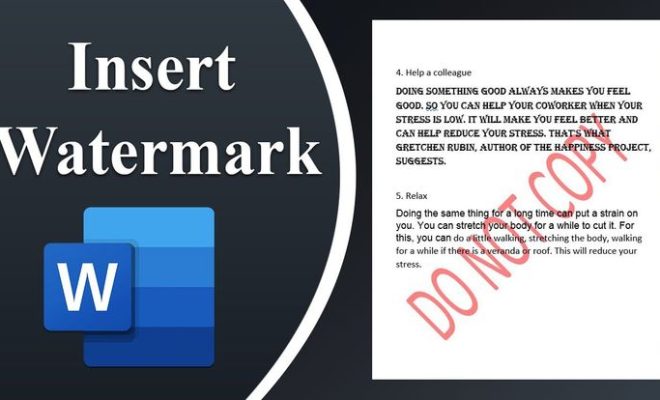
5 Ways to Add a Watermark to a Page in Microsoft Word

How to Direct a Movie
- Link to facebook
- Link to linkedin
- Link to twitter
- Link to youtube
- Writing Tips
5 Top Tips for Writing Clear Instructions

- 5-minute read
- 3rd March 2021
Instructions need to be easy to follow if they’re going to be useful. But how can you ensure this? We have five tips to help you write clear instructions:
- Write an introduction explaining what the instructions will cover.
- Break down the task into clear, logical steps.
- Use the imperative mood when writing up your instructions for clarity.
- Write instructions using simple, easy-to-understand language.
- Get your instructions proofread to make sure they’re error free.
We will look at these tips for writing clear instructions in more detail below.
1. Write an Introduction
Start your instructions with a short introduction. This should detail:
- Exactly what the instructions will cover and what the end result will be.
- How the instructions are set out and how to use them.
- Any equipment or prior knowledge needed to complete the task.
- Any hazards the user should know about before starting.
The content of your introduction will depend on what your instructions are for, but the key idea is preparing your reader to follow your directions.
Imagine, for example, you were explaining how to put together a piece of furniture. You could begin your instructions with a short introduction that:
- Briefly explains the aim of the instructions and illustrates the finished piece.
- Explains how to use the instructions (e.g., how illustrations relate to text).
- Lists the tools and skills needed for the job.
- Warns that using the wrong tools could damage the furniture.
The reader would then be prepared to start doing the task described.
2. Break the Task Down into Steps
Clear instructions will break the process you are explaining down into logical steps. You can then present these steps as a numbered list made up of short sentences.
Each step should cover a single action. However, the detail you go into may depend on what your intended reader is likely to know. For instance, if we were writing a proofreading guide for experienced Microsoft Word users, we might start with:
1. Open the document and turn on the Track Changes mode.
But if we were writing for someone new to Word, we might break this down more:
1. Double click the document icon to open it in Microsoft Word. 2. Go to the Review tab on the main ribbon. 3. Find the “Tracking” section and click the “Track Changes” button. Find this useful? Subscribe to our newsletter and get writing tips from our editors straight to your inbox. Your e-mail address Subscribe Thank you for subscribing to our newsletter!
For more complex instructions with many steps, you might also want to break them down into sections. In a recipe for an especially elaborate cake, for instance, you could group instructions under headings for different parts (e.g., one set of instructions for the main cake, then separate sections for the filling and icing).
This allows the reader to take on one short set of instructions at a time, thus ensuring they don’t become confusing or overwhelming.
3. Write Clearly and Concisely
As well as breaking down the task into steps, each instruction should be clear and concise in itself. A few tips for ensuring clarity when writing instructions include:
- Address the reader directly in the imperative mood . This means phrasing each instruction as a command or request.
- Watch out for repetition, redundancy, and other forms of wordiness .
- Avoid unnecessary jargon and use everyday language where possible.
The key is to adapt the complexity of the language in your instructions to suit the needs of your intended reader. If you think the reader will be unfamiliar with any technical terms you do use, moreover, define them clearly when they’re introduced.
4. Use Visuals to Back Up the Text
Visuals, such as technical illustrations , can give a point of reference that purely text-based instructions never can, thus making them easier to use.
Visuals also transcend language barriers, so the more you can get across visually, the more people will be able to use your instructions.
If appropriate, then, consider adding images at key points. Focus on steps that might be difficult to understand otherwise, and make sure to label images clearly.
For digital or online instructions, you could even embed or link to a video. This could be for the entire process. Or it could just be to clarify specific steps (e.g., a video demonstrating a technique used during a single step).

5. Proofread Your Instructions
When you have a draft of your instructions, it’s time for quality control! The best method for this is to ask someone to follow your instructions in practice.
If they complete the task based on your instructions alone, then you have a good, clear set of instructions! But if they struggle with anything, revisit the problem step(s) and redraft for clarity. Don’t forget to ask your test user for feedback, too.
Once you are happy with your draft, you can move on to proofreading. This will ensure your instructions are error free and clearly phrased throughout. It is a good idea to use a professional proofreading service for this, as it is easy to miss errors in your own work. And our expert proofreaders are always on hand to help!
Share this article:
Post A New Comment
Got content that needs a quick turnaround? Let us polish your work. Explore our editorial business services.
3-minute read
What Is a Content Editor?
Are you interested in learning more about the role of a content editor and the...
4-minute read
The Benefits of Using an Online Proofreading Service
Proofreading is important to ensure your writing is clear and concise for your readers. Whether...
2-minute read
6 Online AI Presentation Maker Tools
Creating presentations can be time-consuming and frustrating. Trying to construct a visually appealing and informative...
What Is Market Research?
No matter your industry, conducting market research helps you keep up to date with shifting...
8 Press Release Distribution Services for Your Business
In a world where you need to stand out, press releases are key to being...
How to Get a Patent
In the United States, the US Patent and Trademarks Office issues patents. In the United...

Make sure your writing is the best it can be with our expert English proofreading and editing.

Speak Better English Grammar

3 Ways to Use English Imperative Form - Giving Instructions + Examples
Updated: 7 days ago
1. When to Use the English Imperative form
We use Imperatives for giving:
-instructions, suggestions, directions,
-commands, advice,
-good wishes & encouragement
-offer, request
You can see examples of the Imperative Form in use in:
> street signs,
> recipes,
> instruction manuals,
> how to prepare, do or make something,
> tutorials etc.
2. Imperative Sentence - Giving Instructions Examples
Verbs in Imperative Form

Imperative Instructions Examples (1)
1. Sit on the mat.
2. Look straight ahead.
3. Breathe in.
4. Count to 5.
5. Breathe out.
(a) How To Make A Cup Of Tea:
Verbs in Imperative form

Imperative Instructions Examples (2)
1. Boil 2 cups water in pot.
2. Add tea leaves.
3. Reduce heat & simmer for 2 minutes.
4. Add milk. Let simmer till about to boil.
5. Turn off heat.
6. Pour and strain into cups.
Vocabulary Check!
Words / Meaning:

simmer = very hot, but not boiling
(b) How To Make A Cup Of Drip Coffee:
Verbs in Imperative form:
Imperative Form - Instructions Examples (3)
1. Add 10g ground coffee into dripper.
2. Pour 180ml hot water slowly over ground coffee.
3. Let it drip for 3-4 mins till complete
Watch Video>>> The English Imperative - Giving Instructions + Example
3. The Imperative Form - Grammar Pattern & Usage
We'll be looking at different ways of using the Imperative forms:
i) How to form the positive
ii) How to form the negative
iii) How to use Imperative with the Adverbs of Sequence
iv) How to sound 'polite' / less direct with the Imperative form
v) Why use the Imperative with a Noun or Pronoun
4. How to form the English Imperative - Sentence Rules & Examples
a. Imperative Form (Positive)
Form: Verb (basic form)
e.g. Telling someone how to cook rice:
1. Wash rice...
2. Add 2 cups...
3. Stir cooked rice...
4. Simmer for...
5. Serve warm.
b. How to form the Imperative (Negative)
i) do not / don't + (Verb)
-Do not wash it. / Don't wash it.
ii) never + (Verb)
-Never wash it.
c. Use Imperative Form with Adverbs of sequence to explain the order in which the steps happen:
Adverbs of sequence:
e.g. Giving Instructions with Adverbs of Sequence
You can say:
1. First, wash rice under running water.

2. Next, add 2 cups water for each cup of rice and cook.
3. Then , stir cooked rice and simmer for 15 minutes.
Grammar Point!
*You can use then , next , after that , interchangeably (in any position).
So you can say:
1. First , wash rice under running water.
2. Then , add 2 cups water for each cup of rice and cook.
3. Next , stir cooked rice and simmer for 15 minutes.
d. Use Imperative Form with 'please' & 'let's to sound more polite
The Imperative can sound a little direct or rude at times:
(Positive form)
i) Tell me.
-Use with 'please'
a) Please tell me. or Tell me, please .
(We can add 'please' which can be either at the start or end of sentence.)

ii. (Negative form)
> Please do not / don't put your bags on the table.
> Do not / don't put your bags on the table, please .
iii. Use with 'Let's'
By using ' Let's ' the speaker is including herself. This makes the command sound more like a suggestion.
-Giving Instructions / Command with 'let's:
Form : Let's + verb
e.g. > Let's eat now.
a. (Positive) Example Sentence:
- A teacher is telling the class...
- " Go to page 5."
Using 'let's -
> " Let's go to page 5."
b. (Negative) Example Sentence:
- Do not go there.
> Let's not go there.
Using "Let" with - me, us, him, her, it, them
Imperative Instructions with "let" - Example Sentence
- us ('s) > Let's go!
- me > Let me talk to your parents.
- him/her > Let him go to the class party.
- it > Let it go... Let it go... (theme song from Disney's Frozen)
5. Now, let's go through more examples of the Imperative form for giving:
-Commands & Instructions
-Good Wishes & Encouragement
-Offer & Request
i) Imperative Form - Giving Commands and Instructions
Example Sentence
> Put it down.
> Leave your wet umbrella outside.
> Come on in.
> Log in with your email address.
> Walk a few steps.
> Please be quiet!
> Don't look down!
> *Emily, write down your answer on the blackboard.
> *Tim, look out!
We don't usually include the Subject in the Imperative sentence. But you can use *noun & pronoun to make it clear who we're speaking to.

*the subject can be at the start or end of the sentence.
i. Give me a high five, *Ben. Good boy!
ii. *Ben, give me a high five. Good boy!
i. Stay there!
ii. *You stay there! (*you is used for emphasis)
ii) Imperative Form - Giving Advice
Imperative Advice Example Sentence:
> Take this medicine 3 times a day after meals.
> Stay in bed.
> Try to keep warm.
> Don't take alcohol.
> Check with your doctor if you still feel unwell.
iii) Imperative Form - Giving Good Wishes & Encouragement
Imperative Example Sentence:

a. Giving Good Wishes
> Enjoy your movie!
> Have fun.
> Send him my best wishes.
b. Giving Encouragement
> Try your best.
> Don't give up.
> Keep going.
iv) Imperative Form - Offer / Request to offer someone something or tell someone to do something:
Imperative offer / request.
1. * Have an apple. It's good for you.
2. Meet me at the cafe later.
3. Drop by the office when you have time.
4. Let me talk to him.
5. Take a seat. He'll be here soon.
*have = eat, drink
6.Using the Imperative Form in Sentences - Conversation Example
Conversation 1
Emma & her grandma are talking...
Emma : Grandma, let me help you carry the basket. It's too heavy for you.
Grandma : Oh, all right. Thanks, sweetheart. Let's take these vegetables to
your mum. She wants to make a salad for our lunch.
Emma: Ok. Pass me the blue bag. Let me put these curry leaves in.
Grandma: Wow, they smell so good. Hurry up darling. I'm feeling hungry.
Emma: Haha, let's go.
Please note:
*Let 's = Let us go
Conversation 2
Lynn and her mum are talking in the kitchen...
Mum: Lynn, try this smoothie. What do you think?
Lynn: Yeah. Not too bad.
Mum: You don't like it?
Lynn: It's not sweet enough.
Mum: Ok . You have 2 choices: Put in a little honey. Or add the watermelon
Lynn: Mum, do both. I love a sweet smoothie!
Mum: Oh, Ok I'll do that. Ask your dad to come down for breakfast, please?
Wake your brother up. He is going to be late for school.
Conversation 3
A mother & son are talking:
Josh: Mum,*should I take a train to the country farm?
Mum: Hmm...it'll take you 4 hours to get there. Take the morning express bus
to the town station. Then , get a taxi to the farm. It's *faster this way.
Josh: Is it far from the station?
Mum: No, it's just a short ride away. Don't forget to text me **the minute
(that) you see granny.
Josh: Sure, mum.
i. (Don't forget to + verb)
Go to >> Imperative Verb + Infinitive 'to' - Advice, Instructions & Suggestions
ii.*Should - Modal verb for advice or suggestions
i. Comparative Adjectives - fast > *faster >> the fastest
ii. (Idiom) ** the minute (that) = as soon as
Sentence Example:
- Put the kettle on the minute you reach home.
- Put the kettle on as soon as you reach home.
Example Conversation 4
A: My driving test is this afternoon.
B: Oh, good luck. Feeling nervous?

A: Yeah, a little.
B: Don't worry . You'll be OK.
A: Any advice for me?
B: Just relax and keep your eyes on the road.
Example Conversation 5
2 friends are texting...
Meg : My train leaves at 12.
Pip: Visiting your parents?
Meg: Yeah. Wish me luck.
Pip: All the best.
Meg: Thanks.
Pip: Send my best regards to your mum.
Meg: Will do.
Pip: Say hi to your dad for me.
Pip: Don't forget to tell your grandma I'll come visit in summer...
- 'll be (short form) = will be
7. Let's Review!
We use the Imperative form for:
-giving instructions,
-suggestions, directions,
-advice, good wishes
Imperative Form Sentence - Grammar Pattern & Usage
We use the Imperative in the following ways in the above situations:
-with Adverbs of Sequence
-'polite' / less direct Imperative form
-use with noun or pronoun
How to form the Imperative
i) (positive)
-we use action verb (basic form)
ii) (negative)
a) Do not / Don't + buy
b) Never + buy
iii) use with Adverbs of Sequence
e.g. to give step-by-step instructions
1.First, ...buy
2.Next, ...put
3.Then, ...do
iv) soften the Imperative with 'please' & 'lets'
a) Please buy. / Buy, please.
b) Let's buy.
v) We usually do not use the subject with Imperative form
But we can use *noun & pronoun to be clear who we're speaking to.
a) Run, Ben! or Ben, run!
8. A Quick Recap!
It's your turn. Practise speaking the Imperative form.
a. Give Imperative instructions - How to make a fruit sandwich.
Look at the image on the right.

Imperative Verbs you can use:
Practise on your own using:
i) Imperative Form
ii) the Adverbs of Sequence.
Give the instruction sentences out loud. Or write it down.
More Practice
b. Try to give directions on how to get to your home
c. Give advice to someone who's starting to learn English
d. Encourage / good wishes to someone who's taking an exam
Thanks so much for reading and Happy Speaking!
Have Questions? Ask us anything. Contact us on the form below.
Related Posts
Grammar:How to Use Have or Have Got + Example Sentence
Imperative Verbs For Cooking: Recipe - Chicken Fideo Soup
Imperative Verb + Infinitive 'To' Form - Uses & Example Sentences
ESL Activities
ESL Games, Activities, Lesson Plans, Jobs & More
in Speaking
Giving Instructions: Tips for Teachers | Teaching ESL Abroad
Giving instructions for ESL teachers
So, what’s the deal with giving instructions to ESL/EFL students. Do you slow it down and make it simple enough? Or, is it good practice for the students to have to figure some stuff out?
Whatever your theory of teaching is, you’ll probably be able to pick up some tips and tricks for giving instructions in the ESL Classroom. We’ll include an introduction to the very important ICQ ( instruction checking questions ) and CCQs .
Keep on reading if you want to know the best way to give ESL instructions to your English learners.
Tips for Giving ESL Instructions
I remember back to when I first started teaching and I would give what I thought were clear, concise instructions for a game or activity. I’d tell the students to start and they’d just look at me with these confused faces. Some would push through and attempt to do something , but it most often wasn’t what I wanted.
The fault was not on the part of my students, it was with me. My instructions were too long and complicated and the exact opposite of what my students trying to learn English needed. I did eventually figure it out after I took a TEFL course .

- Amazon Kindle Edition
- Bolen, Jackie (Author)
- English (Publication Language)
- 301 Pages - 12/21/2022 (Publication Date)
#1: Wait until the Students are Ready
One problem is giving instructions before the class is ready to listen. This is critical in an ESL class , because comprehension is already difficult enough. Wait until the students are seated, calm, and ready to listen to what they need to do.
Chaos will ensue if only a few students out of the entire class understand what they need to do for the next activity they’re going to do. My rule is that I won’t start talking until ALL the students stop talking.
Only 1 person in my class speaks, while the rest of the class listens. This applies to me, as well as the other students.
#2: Use a Variety of Instruction Methods
Another common problem is giving instructions verbally. This is fine and something I do for every single activity in my classroom. However, you should consider giving them in some other way as well.
For example, you might want to make a PPT slide or write a few bullet points on the board. For more complicated things like homework, you’ll probably want to make a handout of some kind for students to refer to.
#3: Did you Get that?
I used to give a big, long list of instructions for something and then finish up with the ever-popular, “Got it?” Sometimes I’d mix it up and say something like:
“Can you do it?”
Do you see what the problem is there? All the students are going to say yes, whether they understand what they need to do or not.
Instead, you’ll want to use some ICQ’s. You’ll have to keep on reading to find out what they are. But, a quick hint. They’re basically open-ended questions that check and see if students have actually understood the instructions.
Of course, I sometimes slip up and fall back into my old ways. But, I know it as soon as I do and strive to do better next time! It can be a hard habit to break.
#4: Don’t Give too Many ESL Instructions at Once
The next issue is giving way too many instructions at once. Information overload really is a thing, so try not to inflict this on your students.
Keep your instructions as simple as possible, and let the challenge be the game, activity or assignment, and not figuring out how to actually do it.
It’s the same with new English vocabulary words . A few words are better than a huge list which can be a little bit overwhelming.
#5: Eye Contact is Key
Here’s something I’ve been guilty of for sure. Are you the type of teacher who talks while writing on the board? Yes? Well, your students likely have no idea what you’re saying to them.
Write about what you want to write about. Then, turn around and talk to your students, making eye contact with them the whole time. This is just so much more effective than doing it while looking at the whiteboard.
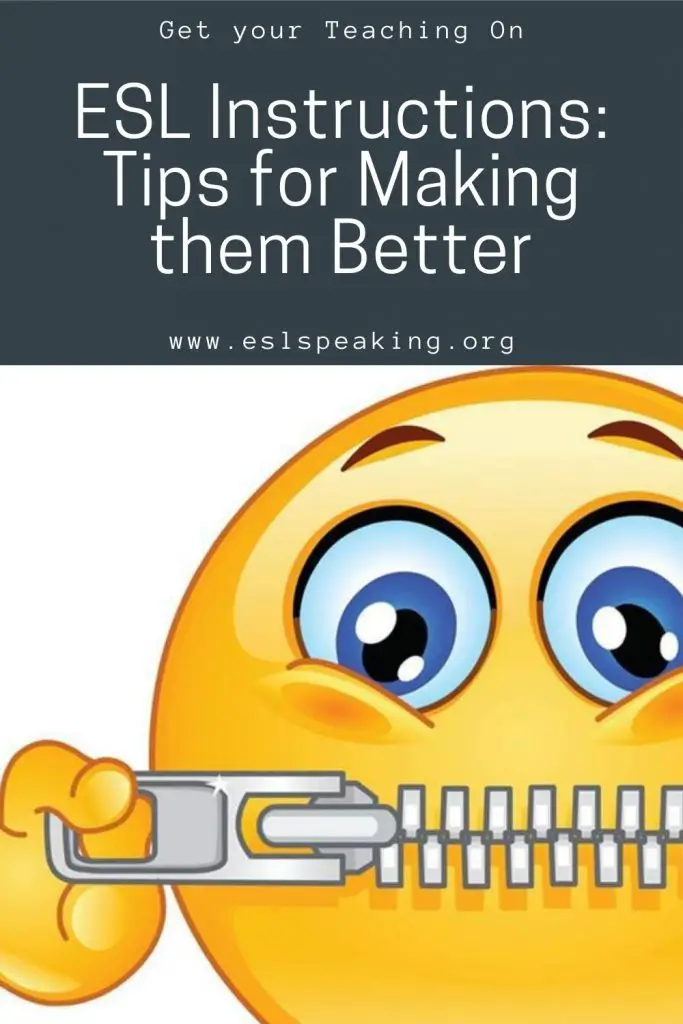
ESL instructions
#6: Speak Slowly when Giving Instructions
Okay, I know that this isn’t just a problem for instructions, but it can apply to just about anything you might say in your English classes.
Beginners struggle to understand even simple things like making a group of 4 or open the book to page 23. Now, imagine that you’re trying to explain a pretty complicated activity as your normal speed of speaking. Well, your students don’t stand a chance!
Give them a break, and speak slowly. If you want to challenge their listening skills, doing it during a listening passage, and not while giving instructions for some other activity.
#7: Give Examples for just about Anything
You know the saying, “A picture says a thousand words?” This applies so, so, so much to giving instructions and using an example.
For some activities, you can take 10 minutes to explain something, or you can often do a quick example in 1-2 minutes and get your point across more effectively.
I usually do a combination of the two things. I’ll give some basic, simple instructions. Then, I’ll choose a student or two to do a quick example with me.
#8: Use Instruction Checking Questions
When I did the CELTA and DELTA English teacher certification courses, it was all about ICQ’s. ICQ = Instruction Checking Questions. Instead of asking, “Got it?” or, “Do you understand?” it’s far better to ask the following questions:
“How many minutes do you have to play the game?” “Who is the winner?” “If you roll a 6, what happens?” “Who starts the game?” “How many sentences do you need to write? “What three rules do you need to remember?
Two Reasons why ICQ’s are Useful
These ICQ’s are useful for two reasons. The first is they confirm to you that the class has understood your initial instructions and show you if you need to clarify anything.
They also serve as a second chance for the lower-level students who might not have caught them the first time to play a bit of catch up. Use them frequently (and CCQ’s-Concept Checking Questions for grammar and vocabulary points) and you’ll find instructions less of a problem than they perhaps have been in the past.
Okay, but What’s a CCQ?
Now that you know what an ICQ is, maybe you want to know what a CCQ is? You’ve probably seen these two terms used kind of interchangeably.
CCQ stands for concept checking questions. Instead of checking instructions, you’re checking if the students understand the concepts, either related to grammar, or vocabulary. Some examples include:
Am I taller or shorter than Min-Ji?
Is this correct? I didn’t went to school yesterday.
ICQ vs CCQ: What’s the Difference?
Let’s do a quick recap. An ICQ is an instruction checking questions. A CCQ is a concept checking question and used to see if your student understands key grammar and vocabulary concepts.
Related: Top 10 ESL Grammar Activities and Games .

How to give ESL instructions effectively
What Should You Keep in Mind When Giving Instructions to Adults?
When you give instructions to adults, there are a few things that you’ll want to keep in mind. Here are some of my best tips:
- Think relevant. Don’t cover every single possible angle or exception. Just give the basics instructions, and when adult learners have a question or require clarification about something, they’ll usually ask you.
- Cognitive overload really is a thing! People can only keep a certain number of points in their working memory (the amount varies from person to person), so try not to overload your students.
- Be direct. Subtleties often get lost in translation!
- Allow for processing time. Most English learners require this, especially beginners. Give an instruction, and then pause before mentioning the next one.
- For beginners, design simple games, activities and lessons. If you teach absolute beginners, things, like open your book to page 17, can be a lot to handle. Simplify your lessons and remember that less is more. This is true for giving instructions, but also for everything else.
- Have you thought about the order? They should be logical, starting at the beginning and going to the end.
- Make sure you have everyone’s undivided attention before starting out. You’ll want everyone’s eyes to be on you, and also to make sure that nobody is talking.
- Don’t forget to use monitoring in the classroom to keep track of student progress.
What’s the Result of Bad Instructions?
Usually, it’s pretty obvious when you’ve given some terrible instructions. You might see some of the following things:
- Dead silence when people should be starting the activity.
- Students doing the wrong things during a game or activity.
- Students talking in their first language to each other, instead of doing what you’ve asked them to do.
- Nervous laughter.
It’s best to just avoid this in the first place by giving some solid instructions, okay?
There are a number of common questions that people have about giving instructions to English learners. Here are the answers to some of the most popular ones.
Why is giving clear instructions important in ESL teaching?
Giving clear instructions is important in ESL teaching because it ensures that students understand the tasks or activities they need to complete, promotes successful learning outcomes, and minimizes confusion or misunderstandings.
What are some strategies for giving effective instructions to ESL students?
Strategies for giving effective instructions to ESL students include using clear and simple language, using visual aids or gestures to support understanding, breaking down instructions into smaller steps, checking for comprehension, and providing examples or models when necessary.
How can teachers check for understanding after giving instructions?
Teachers can check for understanding by asking concept-checking questions, having students repeat or summarize the instructions in their own words, or demonstrating the task with a volunteer student. They can also observe students’ actions during the task or ask follow-up questions.
Should instructions be given verbally or in written form for ESL students?
It is best to provide both verbal and written instructions for ESL students, as it helps reinforce understanding and accommodates different learning preferences. Verbal instructions should be clear and concise, and written instructions can serve as a visual reference.
How can teachers simplify instructions for lower-level ESL students?
Teachers can simplify instructions for lower-level ESL students by using basic vocabulary, short sentences, and familiar structures. They can also use visual aids, gestures, or real-life examples to support comprehension.
How can teachers scaffold instructions for ESL students with different proficiency levels?
Teachers can scaffold instructions by adjusting the level of support based on students’ proficiency levels. This can include providing more visuals, breaking down instructions into smaller steps, or offering additional explanations or examples as needed.
Are there any specific language structures or phrases that can be used when giving instructions to ESL students?
Yes, using imperative verbs (“open,” “write,” “listen”), transition words (“first,” “next,” “finally”), and time expressions (“before,” “after,” “while”) can help provide clarity and structure when giving instructions to ESL students.
How can teachers maintain students’ attention and engagement during instruction-giving?
Teachers can maintain students’ attention and engagement by using a clear and confident voice, varying their tone and pace, using gestures or visuals, and making the instructions relevant and interesting to the students’ lives or interests.
What can teachers do if students still seem confused after receiving instructions?
If students still seem confused, teachers can rephrase or repeat the instructions, provide additional examples, check for specific points of confusion, or pair students up for peer clarification. They can also offer individual support to students who may need extra assistance.
Can students be involved in giving instructions in the ESL classroom?
Yes, students can be involved in giving instructions, especially in collaborative or group activities. This promotes student autonomy, strengthens their language skills, and allows them to practice giving clear instructions to their peers.
Like These Teaching Tips? There are Way More of Them!

These tips about giving instructions are from the book ESL Classroom Management Tips and Tricks: For Teachers of Students Ages 6-12 . So, if you found them useful, then you’re most certainly going to love the book.
What Do you Cover in ESL Classroom Management?
In the book, you’ll:
- Learn how to get the entire class involved.
- Discover how to plan a lesson and organize your class.
- Learn motivation and discipline strategies that work.
- Get some tips for forging a strong, productive relationship with your co-teacher.
- Prepare yourself with go-to activities for those “surprise” classes
Available in a Variety of Formats
You can buy it on Amazon by clicking on the link below. It’s available in both electronic and print versions. The (cheaper!) e-version can be read on any smartphone, tablet, Mac, or PC by downloading the free Kindle reading app.
Does it sound like exactly what you might need to kick your English classes to the next level? It just might be, so be sure to check it out for yourself, but only if you want to get yourself a serious dose of ESL awesome in your life.
—>Buy ESL Classroom Management Tips and Tricks on Amazon<—

Have your Say about Giving Instructions
Do you have any tips or tricks for when you’re giving instructions to your students? Leave a comment below and share them with us!
Also be sure to give this article a share on Facebook, Pinterest, or Twitter. It’ll help other busy teachers, like yourself improve the way that they give instructions to their students.

How to Give Instructions
Last update on 2022-07-17 / Affiliate links / Images from Amazon Product Advertising API
About Jackie
Jackie Bolen has been teaching English for more than 15 years to students in South Korea and Canada. She's taught all ages, levels and kinds of TEFL classes. She holds an MA degree, along with the Celta and Delta English teaching certifications.
Jackie is the author of more than 60 books for English teachers and English learners, including Business English Vocabulary Builder and 39 No-Prep/Low-Prep ESL Speaking Activities for Teenagers and Adults . She loves to share her ESL games, activities, teaching tips, and more with other teachers throughout the world.
You can find her on social media at: YouTube Facebook Pinterest TikTok LinkedIn Instagram
Top Selling ESL Activity Book

As an Amazon Associate, I earn from qualifying purchases.
More ESL Activities and Games

What is the Relationship Between Language and Culture?

List of Animals that Start with E with Pictures

ESL Valentine’s Day Activities, Games, Lesson Plans & More

Easter ESL Activities, Games, Worksheets and Lesson Plans
About, contact, privacy policy.
Best-selling author and English teacher Jackie Bolen has been talking ESL activities and games since 2015. The goal is to bring you the best ideas, lesson plans, and activity recommendations for your TEFL classes.
Get in touch: About + Contact
Privacy Policy and Terms of Use
Email: [email protected]
Address: 2436 Kelly Ave, Port Coquitlam, Canada

Want to create or adapt books like this? Learn more about how Pressbooks supports open publishing practices.
7. COMMON DOCUMENT TYPES
One of the most common and important uses of technical writing is to provide instructions, those step-by-step explanations of how to assemble, operate, repair, or do routine maintenance on something. Although they may seems intuitive and simple to write, instructions are some of the worst-written documents you can find. Most of us have probably had many infuriating experiences with badly written instructions. This chapter will show you what professionals consider the best techniques in providing instructions.
An effective set of instruction requires the following:
- Clear, precise, and simple writing
- A thorough understanding of the procedure in all its technical detail
- The ability to put yourself in the place of the reader, the person trying to use your instructions
- The ability to visualize the procedure in detail and to capture that awareness on paper
- Willingness to test your instructions on the kind of person you wrote them for.
Preliminary Steps
At the beginning of a project to write a set of instructions, it is important to determine the structure or characteristics of the particular procedure you are going to write about. Here are some steps to follow:
1. Do a careful audience and task analysis
Early in the process, define the audience and situation of your instructions. Remember that defining an audience means defining the level of familiarity your readers have with the topic.
2. Determine the number of tasks
How many tasks are there in the procedure you are writing about? Let’s use the term procedure to refer to the whole set of activities your instructions are intended to discuss. A task is a semi-independent group of actions within the procedure: for example, setting the clock on a microwave oven is one task in the big overall procedure of operating a microwave oven.
A simple procedure like changing the oil in a car contains only one task; there are no semi-independent groupings of activities. A more complex procedure like using a microwave oven contains several semi-independent tasks: setting the clock; setting the power level; using the timer; cleaning and maintaining the microwave, among others.
Some instructions have only a single task, but have many steps within that single task. For example, imagine a set of instructions for assembling a kids’ swing set. In my own experience, there were more than a 130 steps! That can be a bit daunting. A good approach is to group similar and related steps into phases, and start renumbering the steps at each new phase. A phase then is a group of similar steps within a single-task procedure. In the swing-set example, setting up the frame would be a phase; anchoring the thing in the ground would be another; assembling the box swing would be still another.
3. Determine the best approach to the step-by-step discussion
For most instructions, you can focus on tasks, or you can focus on tools (or features of tools). In a task approach (also known as task orientation) to instructions on using a phone-answering service, you’d have these sections:
- Recording your greeting
- Playing back your messages
- Saving your messages
- Forwarding your messages
- Deleting your messages, and so on
These are tasks—the typical things we’d want to do with the machine.
On the other hand, in a tools approach to instructions on using a photocopier, there likely would be sections on how to use specific features:
- Copy button
- Cancel button
- Enlarge/reduce button
- Collate/staple button
- Copy-size button, and so on
If you designed a set of instructions on this plan, you’d write steps for using each button or feature of the photocopier. Instructions using this tools approach are hard to make work. Sometimes, the name of the button doesn’t quite match the task it is associated with; sometimes you have to use more than just the one button to accomplish the task. Still, there can be times when the tools/feature approach may be preferable.
4. Design groupings of tasks
Listing tasks may not be all that you need to do. There may be so many tasks that you must group them so that readers can find individual ones more easily. For example, the following are common task groupings in instructions:
- Unpacking and setup tasks
- Installing and customizing tasks
- Basic operating tasks
- Routine maintenance tasks
- Troubleshooting tasks.
Common Sections in Instructions
The following is a review of the sections you’ll commonly find in instructions. Don’t assume that each one of them must be in the actual instructions you write, nor that they have to be in the order presented here, nor that these are the only sections possible in a set of instructions.
For alternative formats, check out the example instructions .
Introduction: plan the introduction to your instructions carefully. It might include any of the following (but not necessarily in this order):
- Indicate the specific tasks or procedure to be explained as well as the scope (what will and will not be covered)
- Indicate what the audience needs in terms of knowledge and background to understand the instructions
- Give a general idea of the procedure and what it accomplishes
- Indicate the conditions when these instructions should (or should not) be used
- Give an overview of the contents of the instructions.
General warning, caution, danger notices : instructions often must alert readers to the possibility of ruining their equipment, screwing up the procedure, and hurting themselves. Also, instructions must often emphasize key points or exceptions. For these situations, you use special notices —note, warning, caution, and danger notices. Notice how these special notices are used in the example instructions listed above.
Technical background or theory: at the beginning of certain kinds of instructions (after the introduction), you may need a discussion of background related to the procedure. For certain instructions, this background is critical—otherwise, the steps in the procedure make no sense. For example, you may have had some experience with those software applets in which you define your own colors by nudging red, green, and blue slider bars around. To really understand what you’re doing, you need to have some background on color. Similarly, you can imagine that, for certain instructions using cameras, some theory might be needed as well.
Equipment and supplies: notice that most instructions include a list of the things you need to gather before you start the procedure. This includes equipment , the tools you use in the procedure (such as mixing bowls, spoons, bread pans, hammers, drills, and saws) and supplies , the things that are consumed in the procedure (such as wood, paint, oil, flour, and nails). In instructions, these typically are listed either in a simple vertical list or in a two-column list. Use the two-column list if you need to add some specifications to some or all of the items—for example, brand names, sizes, amounts, types, model numbers, and so on.
Discussion of the steps: when you get to the actual writing of the steps, there are several things to keep in mind: (1) the structure and format of those steps, (2) supplementary information that might be needed, and (3) the point of view and general writing style.
Structure and format: normally, we imagine a set of instructions as being formatted as vertical numbered lists. And most are in fact. Normally, you format your actual step-by-step instructions this way. There are some variations, however, as well as some other considerations:
- Fixed-order steps are steps that must be performed in the order presented. For example, if you are changing the oil in a car, draining the oil is a step that must come before putting the new oil. These are numbered lists (usually, vertical numbered lists).
- Variable-order steps are steps that can be performed in practically any order. Good examples are those troubleshooting guides that tell you to check this, check that where you are trying to fix something. You can do these kinds of steps in practically any order. With this type, the bulleted list is the appropriate format.
- Alternate steps are those in which two or more ways to accomplish the same thing are presented. Alternate steps are also used when various conditions might exist. Use bulleted lists with this type, with OR inserted between the alternatives, or the lead-in indicating that alternatives are about to be presented.
- Nested steps may be used in cases when individual steps within a procedure are rather complex in their own right and need to be broken down into sub-steps. In this case, you indent further and sequence the sub-steps as a, b, c, and so on.
- “Step-less” instructions . can be used when you really cannot use numbered vertical list or provide straightforward instructional-style directing of the reader. Some situations must be so generalized or so variable that steps cannot be stated.
Supplementary discussion: often, it is not enough simply to tell readers to do this or to do that. They need additional explanatory information such as how the thing should look before and after the step; why they should care about doing this step; what mechanical principle is behind what they are doing; even more micro-level explanation of the step—discussion of the specific actions that make up the step.
The problem with supplementary discussion, however, is that it can hide the actual step. You want the actual step—the specific actions the reader is to take—to stand out. You don’t want it all buried in a heap of words. There are at least two techniques to avoid this problem: you can split the instruction from the supplement into separate paragraphs; or you can bold the instruction.
Writing Style
Placing the key user steps in bold can a very helpful way to signal clearly what the reader needs to do. Often the command verb is bolded; sometimes bold font highlights the key component being discussed.
Use of the passive voice in instructions can be problematic. For some strange reason, some instructions sound like this: “The Pause button should be depressed in order to stop the display temporarily.” Not only are we worried about the pause button’s mental health, but we wonder who’s supposed to depress the thing ( ninjas ?). It would be more helpful to indicate when the reader must “ press the Pause button.” Consider this example: “The Timer button is then set to 3:00.” Again, one might ask, “is set by whom? Ninjas ?” The person following these instructions might think it is simply a reference to some existing state, or she might wonder, “Are they talking to me?” Using the third person can also lead to awkwardness: “The user should then press the Pause button.” Instructions should typically be written using command verb forms and using “you” to make it perfectly clear what the reader should do.
Illustrating Your Instructions
Perhaps more than in any other form of technical writing, graphics are crucial to instructions. Sometimes, words simply cannot explain the step. Illustrations are often critical to the readers’ ability to visualize what they are supposed to do. Be sure that the graphics represent the image from the reader’s perspective.
Formatting Your Instructions
Since people rarely want to read instructions, but often have to, format your instructions for reluctant readability. Try to make your reader want to read them, or at least not resistant to the idea of consulting them. Highly readable format will allow readers who have figured out some of the instructions on their own to skip to the section where they are stuck. Use what you have learned about headings , lists , visuals , and passive space to create effective and readable instructions:
Headings : normally, you’d want headings for any background section you might have, the equipment and supplies section, a general heading for the actual instructions section, and subheadings for the individual tasks or phases within that section.
Lists : similarly, instructions typically make extensive use of lists, particularly numbered vertical lists for the actual step-by-step explanations. Simple vertical lists or two-column lists are usually good for the equipment and supplies section. In-sentence lists are good whenever you give an overview of things to come.
Special Notices : you may have to alert readers to possibilities in which they may damage their equipment, waste supplies, cause the entire procedure to fail, injure themselves or others—even seriously or fatally. Companies have been sued for lack of these special notices, for poorly written special notices, or for special notices that were out of place. See special notices for a complete discussion of the proper use of these special notices as well as their format and placement within instructions.
As you reread and revise your instructions, check that they do the following:
- Clearly describe the exact procedure to be explained
- Provide an overview of content
- Indicate audience requirements
- Use various types of lists wherever appropriate; in particular, use numbered lists for sequential steps
- Use headings and subheadings to divide the main sections and subsections in a logical, coherent order
- Use special notices as appropriate
- Use graphics to illustrate key actions and objects
- Provide additional supplementary explanation of the steps as necessary
- Create a section listing equipment and supplies if necessary.
Technical Writing Essentials Copyright © by Suzan Last and UNH College of Professional Studies Online is licensed under a Creative Commons Attribution 4.0 International License , except where otherwise noted.
Share This Book
- Customer Stories
- Resources Articles Blog Customer Stories
Step by Step Instruction: How To Write Instructions Like a Pro
Using a step-by-step instruction list can help you empower your employees and customers.

Do you ever get frustrated by people who can't seem to follow instructions? While there are some reasons people can struggle to follow instructions, sometimes it's about making sure that the instructions are clear as well.
If you need to give a step-by-step instruction list, it can be challenging to know where to start.
Writing instructions is an art form requiring attention to detail, a deep understanding of the subject matter, and a creative writing touch. Whether you’re writing instructions for a software program, a website, or even a room in your home, it’s important to present instructions in the clearest way possible.
Do you need to write the best instructions possible for your employees or clients? Keep reading to learn more about how to write the best guides for your users or sign-up to Guidde , since we basically create these step-by-step instructions for you.
How Step-by-Step Instructions Help Your Business
From Independent contractors to Enterprises, businesses have lots of responsibilities and obligations to their customers, and often, one of the most important is providing step-by-step instructions for how to use their product or service. Step-by-step instructions are often overlooked in the business world, but when customers can’t navigate your product, it’s not a good sign.
Step-by-step instructions can be a quick, easy, and inexpensive way to show your customers you care enough to help them use your product.
However, as a business, step-by-step instructions do more than help customers; they also help your employees. When your employees are able to understand and follow your step-by-step instructions, it makes the jobs they do easier and helps them know the best way to accomplish their tasks.
When employees aren’t clear on your step-by-step instructions, they can make mistakes or come to you at the last minute with questions, both of which cost your company time and money.
How to Create a Step-by-Step Instruction List Like a Pro
Before you can create a step-by-step instruction, you need to understand the type of step-by-step instruction you’re writing. There are three main types of step-by-step instructions: a how-to guide, a how-to manual, and a how-to template.
A How-To Guide includes steps for accomplishing a task or using a product. It may include tips and advice, but it does not include any hints or screenshots.
A How-To Manual includes the same steps as a How-To Guide, but it includes hints, tips, and screenshots. It includes a bit more detail than a How-To Guide and gives the person using the product a better chance of completing the task.
A How-To Template is similar to a How-To Manual, but it’s created in a way that allows the person filling in the template to use any words they like and to make a completely customized how-to manual. Once you’ve decided on a style, you’re ready to start creating your step-by-step instruction.
One of the most important parts of creating a step-by-step instruction is making it easy to read . Use short sentences and lots of white space to make it easy to get through the instructions.
It’s also important that your step-by-step instruction is easy to follow. Your reader shouldn’t have to flip back to previous pages to catch up. Use a chronological order when possible and let the user know whether to turn left or right at every turn.
Define the Task
The first part of creating a step-by-step instruction is getting to know your reader. What problem or task is your reader trying to solve? What is it that your reader is trying to accomplish?
The problem or task should be defined in such a way that the readers knows exactly what they’re getting into. If they’re reading the step-by-step instruction guide to learn how to use a new piece of software, you should mention what software you’re using. If you’re writing a step-by-step instruction manual for a piece of exercise equipment, you should mention the name of the exercise equipment.
Basically, you should let people know what’s coming, so they know what to expect. Not only will this make your text more informative, but it will also help create a connection between your reader and the piece of equipment they’re trying to learn how to use.
List the Activities
Once you’ve defined the task and you know what it is that your reader is trying to accomplish, it’s time to list the activities or steps required to complete the task. Most people like to see the big picture first, so start with an overall view of all the things you’re going to be doing.
If you’re creating a step-by-step instruction manual for a piece of exercise equipment, for example, you might want to start with a list of the exercises that you’ll be teaching the reader.
Define Activities and End Results
After you’ve listed the activities, go down to the smallest level and write out each activity as a separate step. Each activity should have a title, and you should identify any tool being used for that activity. You should also let the reader know what the end result should look like when they complete the step.
Order the Steps
Once all the steps are defined, you should go back and order the steps in the most logical order, putting the easiest activity first and the most difficult activity last. If the steps need to be followed in a specific order, ensure that each step is in the correct chronological order.
Find Unique Solutions to Build Your Knowledge Base
Using a step-by-step instruction list can help you empower your employees and customers. However, you need to ensure the instructions are clear and understandable.
Are you looking for unique ways to share information with your audience? Sign up for Guidde today and keep your team in the loop. Guidde does everything we just described, automatically in less than 30 seconds.

Moran Altarac
Other articles you might like.
.png)
How to train remote teams
Training remote workers is a must for companies who want to maintain their competitive edge.

Your Sales Process: Where to Use a Video How-to Guide
A video how-to guide can also be a great way to follow up with potential customers after a sales call
How to Use English Grammar for Writing Instructions
- An Introduction to Punctuation
- Ph.D., Rhetoric and English, University of Georgia
- M.A., Modern English and American Literature, University of Leicester
- B.A., English, State University of New York
In business writing , technical writing , and other forms of composition , instructions are written or spoken directions for carrying out a procedure or performing a task. It is also called instructive writing .
Step-by-step instructions typically use the second-person point of view ( you, your, yours ). Instructions are usually conveyed in the active voice and the imperative mood: Address your audience directly .
Instructions are often written in the form of a numbered list so that users can clearly recognize the sequence of the tasks.
Effective instructions commonly include visual elements (such as pictures, diagrams, and flowcharts) that illustrate and clarify the text . Instructions intended for an international audience may rely entirely on pictures and familiar symbols . (These are called wordless instructions .)
Observations and Examples
"Good instructions are unambiguous, understandable, complete, consistent, and efficient." (John M. Penrose, et al., Business Communication for Managers: An Advanced Approach , 5th ed. Thomson, 2004)
The Lighter Side of Instructions: Handbook for the Recently Deceased
Juno: Okay, have you been studying the manual? Adam: Well, we tried. Juno: The intermediate interface chapter on haunting says it all. Get them out yourselves. It's your house. Haunted houses aren't easy to come by. Barbara: Well, we don't quite get it. Juno: I heard. Tore your faces right off. It obviously doesn't do any good to pull your heads off in front of people if they can't see you. Adam: We should start more simply then? Juno: Start simply, do what you know, use your talents, practice. You should have been studying those lessons since day one. (Sylvia Sidney, Alec Baldwin, and Geena Davis in Beetlejuice , 1988)
Basic Features
"Instructions tend to follow a consistent step-by-step pattern, whether you are describing how to make coffee or how to assemble an automobile engine. Here are the basic features of instructions:
- Specific and precise title
- Introduction with background information
- List of parts, tools, and conditions required
- Sequentially ordered steps
- Safety information
- Conclusion that signals completion of task
Sequentially ordered steps are the centerpiece of a set of instructions, and they typically take up much of the space in the document." (Richard Johnson-Sheehan, Technical Communication Today . Pearson, 2005)
Checklist for Writing Instructions
- Use short sentences and short paragraphs.
- Arrange your points in logical order.
- Make your statements specific .
- Use the imperative mood .
- Put the most important item in each sentence at the beginning.
- Say one thing in each sentence.
- Choose your words carefully, avoiding jargon and technical terms if you can.
- Give an example or an analogy , if you think a statement may puzzle a reader.
- Check your completed draft for logic of presentation.
- Don't omit steps or take shortcuts.
(Adapted from Writing With Precision by Jefferson D. Bates. Penguin, 2000)
Helpful Hints
"Instructions can be either freestanding documents or part of another document. In either case, the most common error is to make them too complicated for the audience. Carefully consider the technical level of your readers. Use white space , graphics, and other design elements to make the instructions appealing. Most important, be sure to include Caution, Warning, and Danger references before the steps to which they apply." (William Sanborn Pfeiffer, Pocket Guide to Technical Communication , 4th ed. Pearson, 2007)
Testing Instructions
To evaluate the accuracy and clarity of a set of instructions, invite one or more individuals to follow your directions. Observe their progress to determine if all steps are completed correctly in a reasonable amount of time. Once the procedure has been completed, ask this test group to report on any problems they may have encountered and to offer recommendations for improving the instructions.
- How to Write a Great Process Essay
- What Are Business and Technical Reports?
- 7 Ways to Take Control of Your Classroom to Reduce Student Misbehavior
- Paragraph Length in Compositions and Reports
- How to Break in a New Baseball Glove
- Understanding General-to-Specific Order in Composition
- Definition and Examples of Sorites in Rhetoric
- Definition and Examples of Correctness in Language
- Definitions and Examples of Debates
- Writing a Paper about an Environmental Issue
- Logos (Rhetoric)
- Composition Type: Problem-Solution Essays
- How to Write a Descriptive Paragraph
- Differentiated Instruction and Assessment
- Graphics in Business Writing, Technical Communication
- Scientific Method
- Classes & Services
- Free Course
- Beginner's Course
- Study Advice
- Grammar Help
- Pronunciation
- Listening Practice
- Writing Lessons
- Learn with Music
- English Experts
- Course Reviews
- Table of Contents
- About Diana
- Contact Diana
- How am I doing?
- Privacy Policy
English Writing Lesson 2: How to Give Instructions in English
Do you know how to give instructions in English? What sort of instructions can you give someone?
- How to make a cup of coffee?
- How to search for a topic on Google?
- How to make a call on your cell phone? Or listen to your voice mail?
There are two parts to giving instructions.
What we call Sequencers and then the actions .
Sequencers help order your instructions
It is like the 1, 2, 3, 4 of your actions.
The most common are
First(ly)...
After that...
Example: Today I am going to tell you how to make the best sandwich in the world.
First , you must roast a chicken and slice it into thick pieces. Then toast your favourite bread (two slices).
After that you need to put mayonnaise and mustard on the toast and then the chicken slices. Next you are going to add your vegetables. Tomatoes, lettuce onions, cucumbers etc.
Finally put a couple slices of cheese on the sandwich and then close it with the other piece of toast.
The second part,
Instructions...
do one of three things. 1) Tell people what is necessary 2) what is wrong 3) what is not necessary
- You (don't) need to...
- You have to...
- You must/mustn't...
- You should/shouldn't...
So now that you know the basics...here is an example:
How to Make a Cup of Coffee
First you need to buy some coffee and a coffee maker.
Then you have to put the water into the bottom of the coffee maker. You needn't boil the water (you don't need to boil the water), cold water is fine. Next you have to put the coffee in the coffee compartment and screw the top of coffee maker on. After that you need to put the coffee pot onto the stove. Then turn the stove on hight and wait. You don't have to move the coffee pot. When the water boils and goes into the upper part of the pot you then have to remove the pot from the heat. Finally you pour some coffee into a cup, add sugar and milk and enjoy.
What Other Visitors Have Said
Click below to see what I (Diana)and other visitors had to say about this assignment ...
Now do Lesson 3: How to explain situations in English Visit the Home Page > Lesson 2: How to give instructions MOTIVATE yourself to Learn English!!
New! Comments
Still looking? Search the site for exactly what you need using the site search box below.
Happy exploring!
Would you prefer to share this page with others by linking to it?
- Click on the HTML link code below.
- Copy and paste it, adding a note of your own, into your blog, a Web page, forums, a blog comment, your Facebook account, or anywhere that someone would find this page valuable.
Discover these Amazing ESL Materials!
I have to say that "I am impressed". Your explanations and way of teaching is immaculate.
- Owais
I really admire you for what you have been doing Diana. You are an amazing person!
Diana you are very kind! Thank you for all of your information. My English has really improved.
I would like to tell you how grateful I am for your lovely website and your way of motivating people to learn or improve English.
Sign-up For The Learn English Newsletter
Click here to discover how SBI (Solo Build It) is changing my life! :)
Copyright © 2008-2023. Diana Tower. All Rights Reserved.

Writing Instructions
One of the most common and important uses of technical writing is instructions—those step-by-step explanations of how to do things: assemble something, operate something, repair something, or explain a personal process (enrolling in college, for example) so that readers may better understand it and possibly use it themselves.
Process texts are extremely common in school and professions. In school, teachers frequently assign process assignments. For example, humanities professors may ask for a description of how an artistic or literary period evolved; history professors, the contributions of a culture’s leaders over time; social science professors, the chronology of inventions; engineering professors, explanations of how sound is changed into electrical signals; business professors, how the Federal Reserve works or how to sell a product.
On a daily basis, we read descriptive processes, including recipes, user manuals for new software, or advice columns on how to lose weight or how to succeed in school or a profession. These texts focus on answering one of the following questions:
- “How is this done?”
- “How can I do this?”
While the topics of a process report or a set of instructions may vary, many share similarities: most are written to explain how something works, most are structured in chronological order using numbered steps, and most rely extensively on visuals . In writing instructions for learning a new software program, for example, writers might use screenshots and/or screen videos to walk users through the tutorial.
Generally, it is good to have both text and visuals in your instructions since your audience is likely comprised of people with different learning styles. However, the use of visuals can vary depending on your audience and the intended use of the instructions. Visuals help to clarify a concept that is difficult to explain using only words. Graphics may be used to show how something looks, how something should look once the step has been completed, how something is done or constructed, show trends or relationships, add liveliness to the project, or simply help to organize information. Graphics are useful since almost everyone (including children and others of a different language) can understand visual instructions and see exactly what they need to complete.
Types of Instructions
There are three main types of process texts:
- Descriptive processes : these answer the question, “How is this done?” These texts describe how a process occurs so that readers can understand it better. For example, writing a descriptive process about how you registered for a course online rather than in person might be useful to someone who has never done online registration.
- Prescriptive processes : these are explanatory in nature; they prescribe how something is done (or should be done) so that readers can do it themselves. These are the most common type of instructional documents. For example, you might write a prescriptive process guide for users explaining how to perform basic maintenance on their cars, such as changing their own oil, checking spark plugs, or replacing brake pads. *The samples listed below are examples of prescriptive processes.
- Blended descriptive and prescriptive processes make the main thrust of the document a descriptive process while having a few sections summarizing how the readers can perform the process. In other words, writers may address both “How can I do this?” and “How is this done?” in different parts of one text. Alternatively, they might develop different versions of the same document for two audiences–an audience of users and an audience of interested parties.
Getting Started

At the beginning of an instruction-writing project or assignment, it’s important to consider your audience and determine the characteristics (the number of tasks and steps) of the particular procedure you intend to write about.
Audience and situatio n: Early in the process, define the audience and situation of your instructions. Remember that defining an audience means defining its level of knowledge and familiarity with the topic. It is sometimes helpful to describe your audience to yourself first, and then use that to assess your message at the end to be certain it’s appropriate for your audience.
Number of tasks : An important consideration is how many tasks there are in the procedure for which you are writing instructions. The term procedure can be used to refer to the whole set of activities your instructions discuss, while task can be used to define a semi-independent group of actions within the procedure. For example, setting up your modem is one task in the overall procedure of connecting a computer to the internet.
As another example, a simple procedure like changing a car’s oil contains only one task; there are no semi-independent groupings of other activities. A more complex procedure, like using a microwave oven, contains plenty of semi-independent tasks, such as setting the clock, setting the power level, using the timer, cleaning and maintaining the microwave, and more.
Some instructions have only a single task but have many steps within that single task. For example, imagine a set of instructions for assembling a children’s swing set. One effective approach would be to group similar and related steps into phases , and then renumber the steps at each new phase. A phase is a group of similar steps within a single-task procedure. In the swing set example, setting up the frame would be one phase; anchoring the thing in the ground would be another; and assembling the box swing would be still another.
Focusing Instructions
Another consideration, which maybe you can’t determine early on, is how to focus your instructions. For most instructions, you can focus on the tasks involved , or you can focus on the tools needed .
- In a task approach to instructions on using a phone-answering machine, you’d have sections on recording your greeting, playing back your messages, saving your messages, forwarding your messages, and deleting your messages. These are tasks—the typical things users would want to do with the machine.
- On the other hand, in a tools approach to instructions on using a photocopier, there would be sections on the copy button, the cancel button, the enlarge/reduce button, the collate/staple button, the paper tray, the copy-size button, and so on. If you designed a set of instructions on this plan, you’d likely write steps for using each button or feature of the photocopier.
Instructions Content
Be sure to read the section on “ Document Design ” before creating your instructions. Include the following items:
Introduction : In carefully planning your instructions’ introduction, be sure to:
- Indicate the specific tasks or procedure to be explained.
- Indicate what the audience needs in terms of knowledge and background to understand the instructions.
- Give a general idea of the procedure and what it accomplishes.
- Indicate the conditions when these instructions should (or should not) be used.
- Give an overview of the contents of the instructions.
General warning, caution, danger notice s: Instructions must also alert readers to the possibility of ruining their equipment, screwing up the procedure, and/or hurting themselves. Also, instructions must emphasize key points or exceptions. For these situations, you should use special notices , such as Note , Warning , Caution , and/or Danger .
Technical background or theory: At the beginning of some instructions (usually after the introduction), you may need a discussion of background related to the procedure. For certain instructions, this background is critical—otherwise, the steps in the procedure make no sense. In some cases, writers of instructions may need to spend significant time explaining things to readers before moving on to the actual steps involved in the process.
Equipment and supplies : Most instructions include a list of the things you need to gather before you start the procedure. This includes equipment , the tools you use in the procedure (such as mixing bowls, spoons, bread pans, hammers, drills, and saws) and supplies , the things that are consumed in the procedure (such as wood, paint, oil, flour, and nails). In instructions, these are typically listed either in a simple vertical list or in a two-column list at the start of the instructions. Use the two-column list if you need to add specifications to some or all of the items—for example, brand names, sizes, amounts, types, model numbers, and so on.
Discussion of the steps : When you get to the actual writing of the steps be certain to carefully consider the structure and format of those steps, any supplementary information that might be needed, and the point of view and general writing style of the instructions. One point of view used in technical writing is the second person, which is addressing the audience as you .
*Generally speaking, writers of instructions should strive to do the following:
- Use clear, simple writing whenever possible.
- Have a thorough understanding of the process in all its technical detail.
- Work toward putting yourself in the place of the reader who will be using your instructions.

Student instruction samples
- Welding Instructions Sample (student sample)
- Mechatronics Instructions Sample – Testing Diodes & Transistors (student sample)
- Auto/Diesel Instructions – How to Replace A Rear Sway Bar on A Toyota Corolla (student sample)
- Assembling A PC (student sample)
- How to Change Guitar Strings (student sample)
Professional instruction samples
- Welding Instructions Sample 1 (professional sample)
- Barbie Dreamhouse (professional sample)
- Trampoline Assembly (professional sample)
Additional Resources
- “ Writing Instructions , ” Technical Writing Essentials
- “ Instructions ” Online Technical Writing
Technical Writing for Technicians Copyright © 2019 by Will Fleming is licensed under a Creative Commons Attribution 4.0 International License , except where otherwise noted.
Share This Book
Instructions for a colleague

Learn how to write instructions for a colleague.
Do the preparation task first. Then read the text and tips and do the exercises.
Preparation
Grouping_MjMwNzE=
Checklist for opening the shop
Start at 8 a.m..
- Do this by holding your key card to the alarm panel. It's behind the door near the light switches.
- Open all the blinds and turn on the lights.
- Please don't forget to start the coffee machine so your colleagues have fresh coffee for when they arrive.
- Pay attention to the order list and what is actually delivered.
- Remember not to sign for anything that isn't in the delivery as there are often items missing.
- Check the answer phone and shop email account for any new messages.
- Leave the heating and the air conditioning alone. They are on an automatic timer. So please, don't go near the control panels.
Finally, you need to finish everything above before 8.45 a.m. and open the shop at 9 a.m. There is a red logbook under the counter. Make sure you sign it for each day when you have completed all points on this checklist. Make a note of any issues.
If you have any problems, call your supervisor or the 24-hour support line number below.
- Use imperative verb forms to give orders and instructions: Turn off the alarm / make sure to sign the logbook.
- Tell people exactly what you want them to do and when: You need to do everything above before 8.45 a.m.
- Tell people where things are – they might not know: It's near/behind/over/under the …
- Give emergency contact information.
- Have a sheet for people to sign after they have completed the process, e.g. cleaning a machine or balancing the cash register.
MultipleChoice_MjMwNzI=.xml
ReorderingVertical_MjMwNzM=.xml
GapFillDragAndDrop_MjMwNzQ=.xml
Who do you need to give instructions to? What for?
Language level
I gave instructions to the new staff at the restaurant, where I have worked before. Before opening and closing the restaurant, she has to know what she needs to do, what she should check carefully, etc.
- Log in or register to post comments
"Who do you need to give instructions to? What for?" I give instructions to my teammates when we have a group project. For example, I give them instructions about automatically writing citations for a paper.
I give instructions to my sister,because she doesn't know how to cook and I teach her.
I have to give instructions to my colleagues when I want to go on vacation. I have to leave details about tasks that must be finished while I'm away. For example, don't forget to send a report to the head office. You need to send it before the fifteenth of the month. Or be sure to check numbers after processing the data. I have excellent colleagues and have complete confidence in them.
As A father I always give instructions to my daughters for example, don't forget to turn off lights before you sleep, don't forget to make your youngest daughter go to the toilet, pay attention if you use the stove, and make sure you turn off it, remember to use the air condition on the sleep mode, check the light before you leave to the school you have to turn off the lights, make sure you finish your homework
at the moment, I'm not in charge of giving instructions to anyone. but when somebody asks me about something that I know. I'm giving them instructions on how they must do it. but I use a lot of instructions. in fact when I want to do something that I haven't done by now. I start googling and finding some reliable instructions on how to do it for example how to install in-need software and extensions, how to set my laptop to dark mode, and so on In fact, I'm the one who goes beyond my own comfort zone by doing something new through instructions.
Some of my close friends are needed to give an instruction not to be late for classes or some appointments we make often. If someone is not provided with the details exactly, he/she will be not on time and the plans we make may be called off unfortunately.
I've got one pupil for which I help to learn the layouting websites on a voluntary basis. Sometimes, when I check up they work I do some instructions about how to imrove it
I have a dog so sometimes I have to give her some instructions like don't pick socks and don't eat that.
I need to give instruction to my sister to ensure our small business is doing well.
Online courses

Group and one-to-one classes with expert teachers.

Learn English in your own time, at your own pace.

One-to-one sessions focused on a personal plan.

Get the score you need with private and group classes.
How to Write an Instruction Manual [With Examples]
Last Updated
August 20 2022
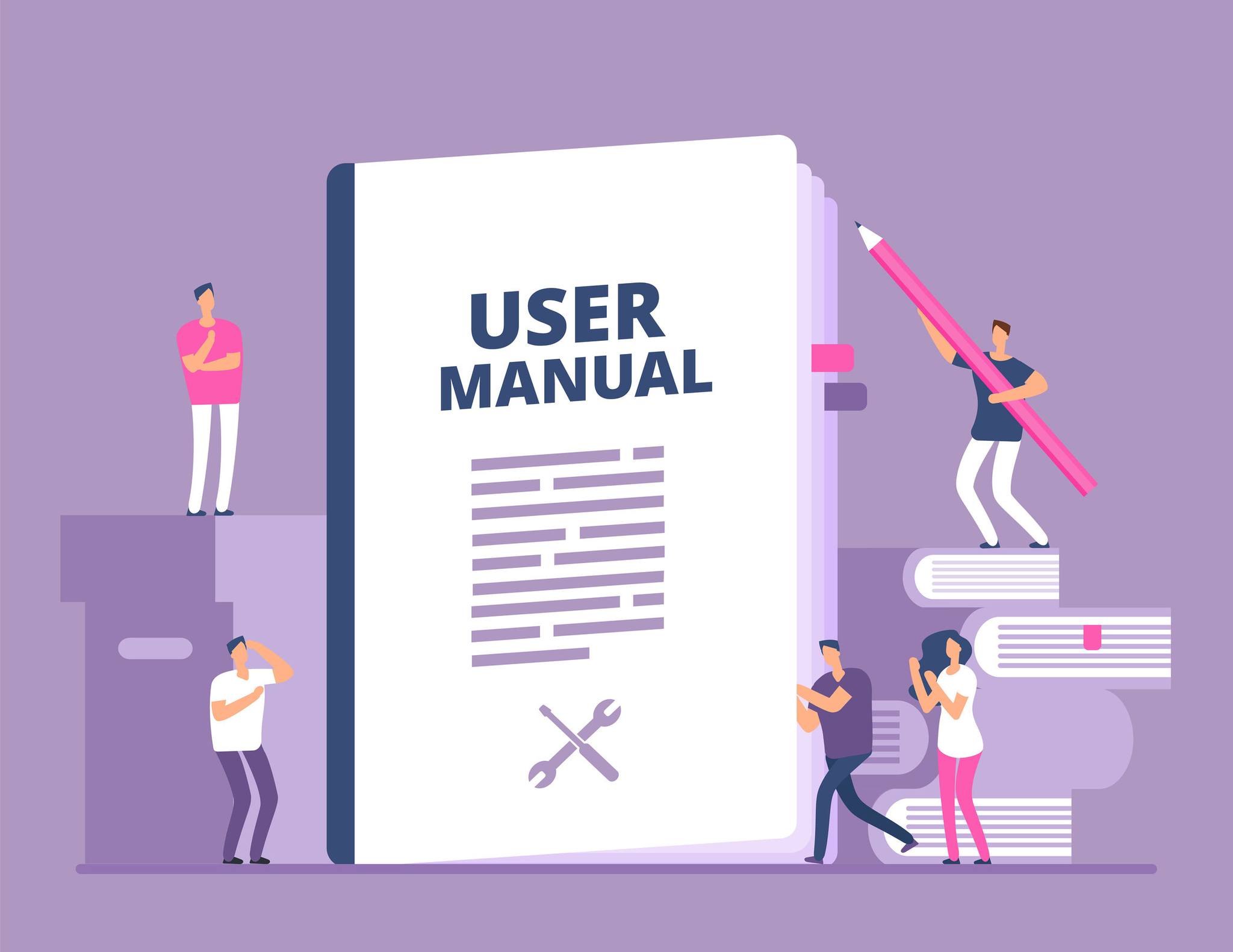
If you’re looking to provide better support to your users, creating instruction manuals for your products should be one of your top priorities.
The fact is, your customers just aren’t going to stick around if they don’t know how to use your products. As Wyzowl recently found, 80% of users delete apps or software if they don’t know how to use them — and 55% of consumers will return a product or request a refund for similar reasons.
To be sure, you’re probably pretty familiar with instruction manuals, even if only from the consumer side.
But writing an effective user manual requires more than just typing up a few step-by-step instructions and calling it a day. If anything, this haphazard approach will likely cause more harm than good to your user’s experience with your products — and with your brand.
So, we’re going to dive deep into everything you need to know about writing user instruction manuals for your products.
What is an Instruction Manual?
An instruction manual is a document that explains how to use a product or service.
Instruction manuals are often referred to by many different names, including:
- User manuals
- Product manuals
- Product instruction manuals
…and other such variations.
An instruction manual is meant to be a comprehensive resource for anything there is to know about a given product. The main purpose of the document is to make clear to customers how to use the product to its maximum potential.
(As we’ll discuss, an effective instruction manual will do much more than that.)
What Information Do Instruction Manuals Include?
While all instruction manuals are unique in many ways, they all typically include the following content and information.
Product Identification Info
All instruction manuals should specify with clarity what product it’s referring to.
The key pieces of info to include here:
- Product name
- Model number
- Product series’ name (if applicable)
This is especially important for teams that offer multiple versions of products with slight variations between each.
Product Specifications and Description
Your instruction manual should include key information about the product, such as:
- Product dimensions
- Product features and functions Product materials and production info
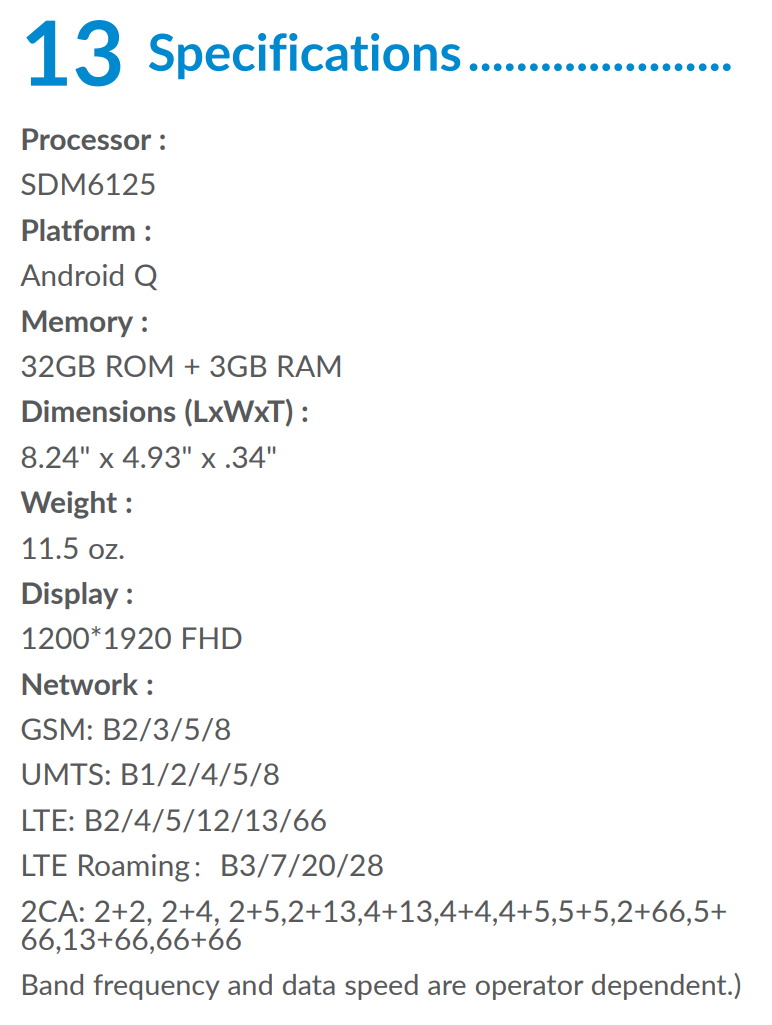
Usage Instructions
What would an instruction manual be without instructions?
Here, you’ll break down the step-by-step instructions for using your product. Typically, you’ll break this down further to detail specific product features — making sure to prioritize those central to the product’s core usage.
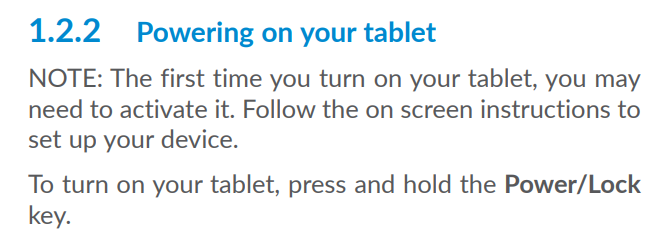
You’ll want to include instructions for your product’s optional and/or advanced features, as well.
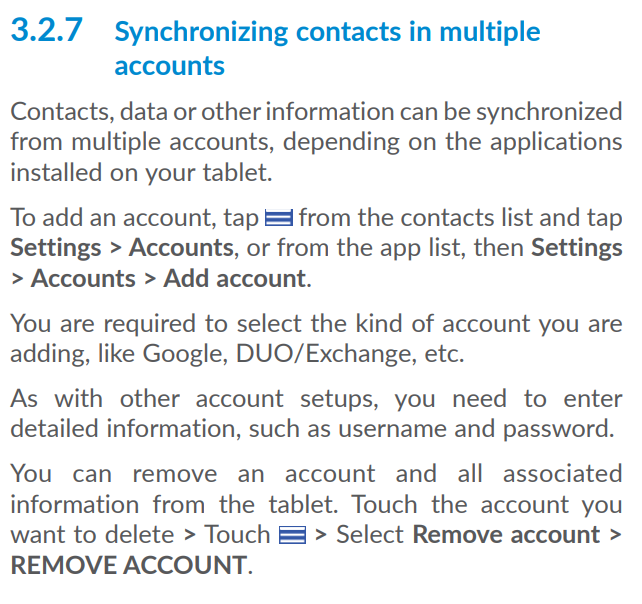
Finally, troubleshooting info can help your users get out of a jam — and back on the path toward success.
Glossary of Terms
A glossary is essential to explain and/or clarify the meaning of certain words, terms, and other jargon related to your products.
As shown above, you may also include acronyms within your glossary — or create a separate glossary specifically for the acronyms used throughout your instruction manual.
Troubleshooting Info and FAQ
Even with proper instruction, your users will likely still run into trouble from time to time.
At the very least, they’re going to have questions about certain features, processes, or product use cases.
At any rate, including troubleshooting information will all but ensure your users can continue making progress even when things don’t go exactly according to plan.
Safety Precautions
Depending on the situation, providing clear safety information within your instruction manuals could literally save lives.
Even if there’s no physical risk in using your product, it’s important that your user manuals are completely transparent in this regard.
This may mean communicating how to:
- Prepare or store a product to protect quality and functionality
- Safely log in and out of digital accounts
- Dispose of products after use
…or anything else the user needs to know to stay safe while using your product. Your manuals should include clear instructions as for what users should do, who to contact, etc. when facing emergency situations.
Policies and Terms of Use
Be sure to include information regarding usage terms of your product, along with standards for quality assurance.
This can help clarify any confusion around purchases, returns, exchanges, or any other request your users may have after buying your product. Similarly, warranty info can make clear what your responsibilities are should the product fail at any time.
Table of Contents and Index
Lastly, your instruction manuals should feature a table of context and an index to help users navigate the document.
Incidentally, these features will also give you an overview of the document — and help you ensure you’ve covered the topics you’d wanted to within each instruction manual you create.
The Benefits of Creating Product Instruction Manuals
On the surface, the answer to this question seems pretty straightforward.
But an instruction manual can do a lot more than just teach your customers how to use your products.
Promote Correct and Optimal Product Use
As we said at the start, if your customers aren’t sure what to do with your product, they’re not going to be your customers for much longer.
Even those who have an adequate understanding of how to use your product might not stick around if they can’t use it to its full potential. Sure, they may get some value out of it — but they’ll almost certainly be missing out on major opportunities to thrive.
With comprehensive instructions in-hand, though, your users will always know exactly how to get the most out of every product you offer.
Prevent Incorrect Use of Product
At the same time, an effective instruction manual decreases the chances of your customers using your product incorrectly.
For one, your customers will never have to guess as to what to do next — and can simply refer to the document if they’re unsure.
What’s more, your instruction manuals will explicitly state how the product is not to be used.
This will further optimize user outcomes, and minimize the chances of their creating dangerous situations through misuse of your product.
Offer Self-Service Resources
Your instruction manuals give your customers even more ways to solve problems and accomplish their goals without reaching out to your support staff.
In the immediate sense, this minimizes friction for your customers, and makes it just that much easier to take the next step in their journey. Thinking of the bigger picture, your instruction manuals will empower your users to take more control over their journey — even when facing the most difficult challenges along the way.
(That said, your users will only experience this benefit if they have complete access to your instruction manuals at all times. More in a bit.)
Improve User Adoption and Retention Rates
With a comprehensive instruction manual in hand, your customers:
- Will know how to use your product to its highest potential, and
- Will have the autonomy needed to make progress on their own
This will have a major impact on your ability to onboard new users quickly and efficiently. The easier it is for them to learn to use your product, the sooner they’ll reach those initial “aha” moments and milestones.
An effective instruction manual can also help keep users onboard — and even get them more engaged with your products in the future.
Again, they’ll be more likely to stick with a product when they encounter trouble spots. Moreover, “regular” users can upgrade their skills and product knowledge with ease — potentially leading them to upgrade to a more valuable product or service tier soon after.
Save Time and Resources Internally
Taking the time to create an effective instruction manual will actually save your team a ton of time and other resources in the long run.
Firstly, your support staff will have fewer service tickets to work through — giving them more time and energy to spend on the more intensive issues your users will still occasionally face. Service engagements will also be more efficient, as both parties will maintain alignment by literally being on the same page of a product manual as they work through the problem at hand.
Bonus: An Asset for Marketing and Sales Teams
To be clear, instruction manuals are not the place for overly promotional or salesy copy and content.
However, they can have an effect on your customers’ willingness to buy from you. Your prospects, for example, can use your instruction manuals to determine which product is right for them — and what their potential options will be in the future.
(They can also determine which products aren’t for them, which will help them avoid a poor experience with your company.)
And, in general, offering all this valuable information to your customers will make them appreciate your brand more and more — and will lead to a number of other benefits for your company.
Qualities of an Effective Instruction Manual
Again, though instruction manuals vary in terms of structure and content, those that are most effective share the following qualities.
Above all else, your instruction manuals need to be helpful.
Yes, they need to help your customers use your products, overcome challenges, and learn more about what your brand can do for them.
But “being helpful” also means optimizing the overall experience for your users.
The goal of your instruction manual isn’t to simply provide information; it’s to help the user accomplish something. While the information is the focus of the document, the following qualities are just as important to ensure your instruction manuals are truly as helpful as they can be.
Instruction manuals should be made accessible to all users at all times, on any device.
(Really, going omnichannel is crucial to overall customer support efforts by today’s standards.)
For our purposes, offering instruction manuals openly and in multiple formats minimizes friction for the user at a time when they’re most in need of assistance. And, even when not in immediate need, they can still engage with the document however and whenever they prefer.
Many teams include their instruction manuals within their customer service knowledge base . This makes for open access to all manuals as needed — and optimizes the navigability and searchability of the document, as well.
Clear, Comprehensive, and Concise
The actual content of your instruction manuals should always follow the three C’s.
First, it must be clear. In such technical documentation, clarity of language, visual aids, and other media is crucial to the user’s comprehension. The meaning of all instructional content should be self-evident, with minimal room for interpretation throughout the document.
An instruction manual should cover the product (and specific product usage) comprehensively — leaving no information unsaid, and no questions unanswered. As needed, the manual may explain certain points in greater detail either directly or via additional resources.
At the same time, being concise allows your users to quickly find the info they’re looking for — and just as quickly put it to use. And, this brevity will decrease instances of misunderstanding that could be disastrous to the user experience.
User-Centric
All instruction manuals should be created specifically for the end-user.
The user’s knowledge, skills, and abilities, for example, should factor into a number of decisions, such as:
- Use of jargon, acronyms, and other verbiage
- The depth of explanations and illustrations needed
- The inclusion of additional instructions or resources
Many brands even offer multiple instruction manuals for single products for different users and use cases.
As shown above, effective instruction manuals also speak directly to the individual — not to a faceless “user”. This shift in language and overall tone adds a layer of personableness to the experience that reinforces the brand’s dedication to their audience’s success.
Great instruction manuals don’t shy away from the use of visual aids.
Photographs, illustrations, diagrams…all of it (and more) should be used frequently to clarify and further the user’s understanding of a concept or process. In some cases, graphic aids alone may be sufficient for helping the user accomplish a task.
Digital instruction manuals often include animated illustrations and video demonstrations.
Effective instruction manuals are organized to maximize usability and navigability — and to aid user comprehension.
Firstly, they’ll include the table of contents, index, glossary, and other traditional aspects as expected. On top of their actual functions, the mere existence of these assets makes for a more familiar experience for users, even when the content is unfamiliar.
The information within effective instruction manuals is appropriately scaffolded, as well. In other words, it’s presented so that user knowledge is constantly building on itself, with each piece of information preparing the reader for the next.
Note, for example, how Nureva focuses first on pre-installation recommendations, then leads readers to installation guides and other in-depth content.
Top-notch instruction manuals have a branded look, tone, and feel to them without distracting the reader from the purpose of the document.
Typically, this means taking advantage of spaces where branding is more appropriate and expected. For example, Apple rarely refers to itself throughout its manuals – except when required for demonstrative purposes.
But, again, branding is always secondary to the goal of showing the customer how to use the product.
Strategies to Writing an Effective Instruction Manual
Alright, so you know your instruction manuals will need to adhere to everything we discussed above.
Now, let’s look at how to make it happen.
1. Set Clear Goals
Your first order of business is to set clear goals for the overall initiative.
Start by asking the question, “Why are we creating this instruction manual?” — and going beyond the surface with your answer. While the obvious answer is “to help our customers use our product successfully”, nail down clear statements that define:
- What “successful product use” means in this instance
- What successful use of the product will enable users to do
- Why this is important to their journey
Then, start thinking about the quantitative metrics, such as CSAT and CES, along with conversion, adoption, and retention rates.
In setting more specific and contextual goals to strive for, you’ll be better able to measure the impact of your new instruction manuals — and to make laser-focused improvements to your documentation in the future.
2. Think Like Your Users
In order to create a user-centric instruction manual that gives your customers what they need, you need to put yourself in their shoes.
First, consider who they are in terms of persona, audience segment, and how they engage with your brand. This will help you set the correct tone for the manual — along with your approach to creating it.
Then, answer the following questions about your user:
- What background knowledge and skills do they have that relate to the product?
- What required knowledge or skills do they not have? How can you teach them?
- What questions might they have as they learn to use the product?
With this knowledge, you can deliver the exact information your users need at a given moment in order to get maximum value from your product.
Lastly, think about how your users typically engage with branded content and documentation. While striving toward omnichannel is still the ticket, you at least want to make your instruction manuals available via your customers’ preferred methods.
Thinking like your users allows you to anticipate their needs at every step — and to provide the exact guidance they need to press forward with confidence.
3. Involve All Stakeholders and Team Members
Creating an instruction manual should be a collaborative process involving a number of stakeholders within your organization.
For example:
- Dev and Design teams can provide product features, functions, and specs; break down processes into specific and sequential steps; check the document for accuracy and comprehensiveness.
- Customer Service and Support can help identify key information to focus on; provide insight into user issues; assess manuals for digestibility.
- Marketing and Sales can keep messaging on brand as needed, and can also provide insight into your customers’ frequently asked questions and such.
And, regardless of their specialty, getting additional eyes on the document will minimize typos, grammatical errors, and other simple mistakes.
4. Create and Use Instruction Manual Templates
Over time, you’re going to end up creating more than one instruction manual.
Instead of starting each guide from scratch, why not create a boilerplate template from the get-go?
Internally, it gives your team a head start on each initiative — and aids in the development of standardized, repeatable processes for creating new manuals. As we’ll get to in a moment, the use of templates makes it easier to identify and make improvements to your documentation moving forward.
For your users, templates provide a sense of consistency and familiarity at a time of relative uncertainty. Practically speaking, it makes it easier for returning users to navigate each instructional document you publish. These consistently positive self-service instances will continually reinforce your users’ trust in your brand.
To be sure, you will need to tweak your instruction manual templates for every new document you create, for a variety of reasons. But starting with the template that’s been most effective thus far will easily get your efforts started on the right foot.
On that note…
5. Collect Usage Data and Feedback — and Make Improvements
The only way to know whether your instruction manuals have been effective or not is to collect usage data and feedback from your customers.
Regarding usage data, you want to pay close attention to things like:
- What pages and content are being accessed most frequently
- How long users tend to stay on a page, or in a session
- What their paths look like when navigating the document
Zooming out, you also want to analyze the context of these engagements as best you can. Knowing what a user did before and after checking out your instruction manual will allow you to better understand their needs, and gauge your ability to help them.
User feedback should play a key role as you make improvements to your instruction manuals. In some cases, you might ask users to provide feedback via well-timed surveys and similar forms.
Customer support tickets, marketing and sales conversations, and other engagements can provide valuable insight into your user’s instructional needs, too. In analyzing these engagements, you’ll uncover:
- Questions and problems your customers still have regarding your product
- Information they’re unaware of that should be included in your manuals
- Issues they have with accessibility and usability of your manuals
With all this data in hand, you’ll be able to make ultra-specific improvements to your individual user manuals, your instruction manual templates, and your approach to creating this documentation on the whole.
Use Helpjuice to Create, Present, & Manage Instruction Manuals
Let’s face it:
To create the type of engaging, navigable, and user-friendly instruction manual your customers need, you’ll likely need some digital assistance.
While many basic documentation tools can help you get started, you’ll eventually want to move onto dedicated knowledge base software to a) optimize your documentation efforts, and b) deliver a more valuable experience to your customers.
Which is where we come in.
With Helpjuice, your team can collaborate in real-time to create rich, comprehensive, interactive instruction manuals for your users — then make them easily accessible to your user base as needed. And, with our reporting tools in hand, you’ll always know how to make your manuals more helpful and empowering to your customers over time.
Want to learn more? Schedule a demo with Helpjuice today!
More Blog Posts
Enjoyed this article? Check out our favorites
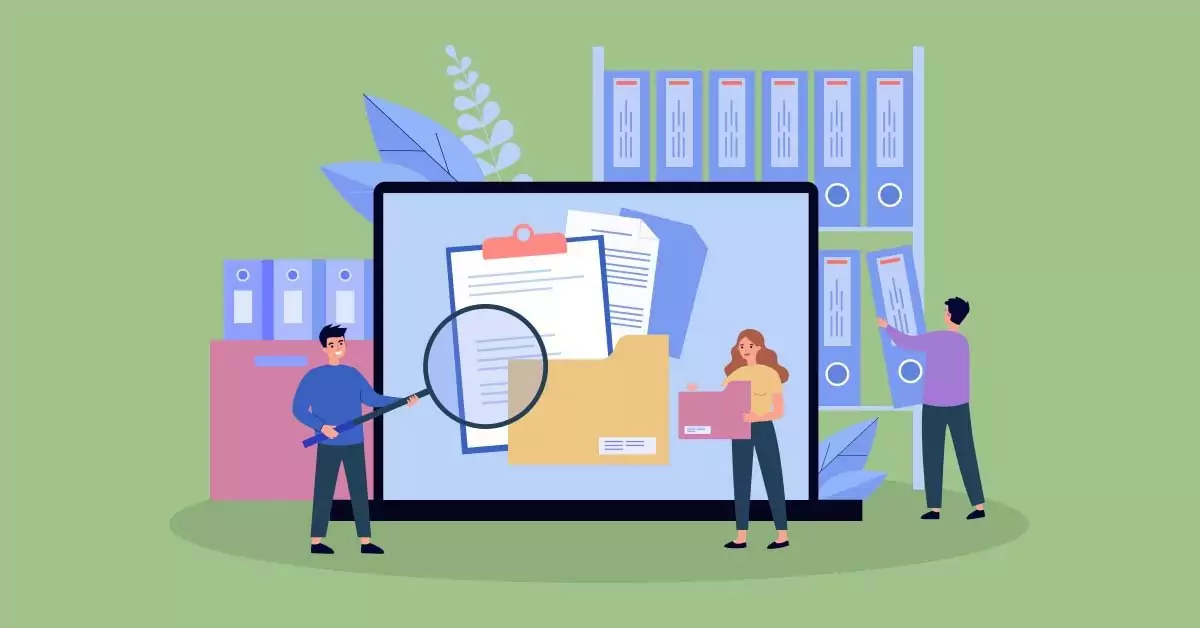
We Tested 5 GitBook Alternatives: The Best Revealed
How to Create an Effective Employee Handbook [With Examples]
Best Slack Apps and Integrations For Your Business in 2023
Case Studies
Our Case Studies
Some of the best case studies to improve your knowledge base

From Support Tickets to Satisfaction: The Incredible Transformation at Sign ...

Discover the Secret to Obbi's 30% Decrease in Support Tickets!...

How Helpjuice Cut Article Creation Time by 8x...
Start your 14-day free trial.
Join over 1000+ companies already growing with Helpjuice.
An official website of the United States Government
- Kreyòl ayisyen
- Search Toggle search Search Include Historical Content - Any - No Include Historical Content - Any - No Search
- Menu Toggle menu
- INFORMATION FOR…
- Individuals
- Business & Self Employed
- Charities and Nonprofits
- International Taxpayers
- Federal State and Local Governments
- Indian Tribal Governments
- Tax Exempt Bonds
- FILING FOR INDIVIDUALS
- How to File
- When to File
- Where to File
- Update Your Information
- Get Your Tax Record
- Apply for an Employer ID Number (EIN)
- Check Your Amended Return Status
- Get an Identity Protection PIN (IP PIN)
- File Your Taxes for Free
- Bank Account (Direct Pay)
- Payment Plan (Installment Agreement)
- Electronic Federal Tax Payment System (EFTPS)
- Your Online Account
- Tax Withholding Estimator
- Estimated Taxes
- Where's My Refund
- What to Expect
- Direct Deposit
- Reduced Refunds
- Amend Return
Credits & Deductions
- INFORMATION FOR...
- Businesses & Self-Employed
- Earned Income Credit (EITC)
- Child Tax Credit
- Clean Energy and Vehicle Credits
- Standard Deduction
- Retirement Plans
Forms & Instructions
- POPULAR FORMS & INSTRUCTIONS
- Form 1040 Instructions
- Form 4506-T
- POPULAR FOR TAX PROS
- Form 1040-X
- Circular 230
Get an extension to file your tax return
If you need more time to file your taxes, you can request an extension through October 15. You must file your request by the April tax filing due date to get the extension. Make sure you pay any tax you owe by the April filing date. The extension is only for filing your return.
Automatic extensions
You may qualify for an automatic tax filing extension if you’re:
- In a federally declared disaster area
- In the military stationed abroad or serving in a combat zone
- A citizen or resident alien living outside the U.S.
Get an extension
There are 3 ways to get until October 15 to file your tax return.
Pay online and check the box
Pay what you owe using an online payment option and check the box that you are paying as part of filing for an extension. You don’t have to file a separate extension form and you’ll receive a confirmation number of your extension for your records.
Use Free File (no income limit for extensions)
Use IRS Free File to electronically request an automatic tax-filing extension.
Request an extension by mail
1. File Form 4868, Application for Automatic Extension of Time To File U.S. Individual Income Tax Return . You can file by mail, online with an IRS e-filing partner or through a tax professional. 2. Estimate how much tax you owe for the year on the extension form: Subtract the taxes you already paid for the filing year.
Find more on extensions for: Businesses or corporations Form 7004, Application for Automatic Extension of Time to File Certain Business Income Tax, Information, and Other Returns Form 1138, Extension of Time for Payment of Taxes by a Corporation Expecting a Net Operating Loss Carryback U.S. citizens or resident aliens living outside the U.S. Form 2350, Application for Extension of Time to File U.S. Income Tax Return (For U.S. Citizens and Resident Aliens Abroad Who Expect To Qualify for Special Tax Treatment) Exempt organizations Form 8868, Application for Extension of Time To File an Exempt Organization Return Retirement plans Form 5558, Application for Extension of Time to File Certain Employee Plan Returns Estates Form 4768, Application for Extension of Time to File a Return and/or Pay U.S. Estate (and Generation-Skipping Transfer) Taxes Form 8892, Application for Automatic Extension of Time to File Form 709 and/or Payment of Gift/Generation-Skipping Transfer Tax Information return filers Form 8809, Application for Extension of Time to File Information Returns
'Wrong': Prosecutors blast judge's proposed jury instructions in Donald Trump's classified documents trial
Justice department special counsel jack smith asked u.s. district judge aileen cannon to rule quickly so he could potentially appeal before trial..
- U.S. District Judge Aileen Cannon asked lawyers for Trump and Smith to review potential jury instructions that said the court and jurors couldn't review Trump's actions in the case.
- Prosecutors called the instructions "flawed" and "wrong" for allegedly misconstruing the Espionage Act governing how classified documents are handled.
Federal prosecutors argued Tuesday that U.S. District Judge Aileen Cannon 's proposed jury instructions are “flawed” and “wrong” in former President Donald Trump’s trial on charges he hoarded classified documents after leaving the White House .
Justice Department special counsel Jack Smith urged Cannon to rule quickly on the jury instructions and on her view of whether Trump can be charged under the Espionage Act . Trump contends the law doesn’t apply to him and Smith threatened to appeal if Cannon rules in the former president’s favor interpreting the law.
The dispute is about what role the Presidential Records Act (PRA) plays in the case. Trump contends he converted the classified records to personal records under the PRA as he carted them to Mar-a-Lago at the end of his administration. But Smith argues Trump told no one of the decision and it wouldn’t matter if he did because the PRA doesn’t govern classified documents.
Trump’s and Smith's replies filed Monday were in response to Cannon proposing two jury instructions that basically followed the former president’s argument. One potential instruction would have told jurors that they and the court had no power to review Trump’s decision to keep the records.
“That legal premise is wrong, and a jury instruction for (the Espionage Act) that reflects that premise would distort the trial,” Smith wrote in his filing. “Indeed, based on the current record, the PRA should not play any role at trial at all.”
Prep for the polls: See who is running for president and compare where they stand on key issues in our Voter Guide
Trump's lawyers argued the Espionage Act is too vague and he can't be charged under it
Trump’s lawyers, Todd Blanche and Christopher Kise, repeated their request to Cannon to throw out the charges under the Espionage Act as too vague. They argued any jury instructions would require “judicial gloss” and therefore the law as applied to Trump would be “unconstitutionally vague and ‘no law at all.’”
“Setting aside the vagueness problem, (the statute) remains on the books, but it does not prohibit the conduct alleged by the Office against President Trump,” Blanche and Kise wrote.
Cannon has rejected the vagueness argument once but has no deadline to decide on jury instructions. Smith has asked her to decide “promptly” for a potential appeal, to avoid having her reject his argument during the trial, when it could upend the entire case.
“The Government must have the opportunity to consider appellate review,” Smith wrote.
Smith's team has already appealed and overturned two of Cannon's decisions that aimed to block or delay scrutinizing the classified documents seized in an FBI search of Mar-a-Lago in August 2022 at the 11 th U.S. Circuit Court of Appeals.
Judge asked for input on jury instruction saying courts, juries can't review Trump's actions
Cannon’s request for both sides to “engage” with two possible jury instructions came after a hearing in which she didn’t resolve the dispute over whether the documents fell under the Presidential Records Act.
In one proposed instruction, Cannon said jurors should “make a factual finding as to whether the government had proven beyond a reasonable doubt” the records are personal or presidential.
In the other, Cannon proposed telling jurors “a president has sole authority under the PRA to categorize records as personal or presidential during his/her presidency. Neither a court nor a jury is permitted to make or review such as categorization decision.”
The Presidential Records Act designates all presidential records public property to be stored at the National Archives. Exceptions are made for personal documents such as birthday cards a president receives while in office.
Trump has argued he designated the records as personal under the PRA while still president, so he was allowed to take them to Mar-a-Lago. But prosecutors said during their "exhaustive investigation" interviewing Trump's former chiefs of staff, White House counsel and national security adviser, "not a single one" heard him say he was designating the records as personal.
"To the contrary, every witness who was asked this question had never heard such a thing," Smith wrote.
What charges does Trump face?
Trump is charged with retaining about 100 national defense documents dealing with secrets such as defense and weapons capabilities of U.S. and foreign countries, and U.S. nuclear programs , and then conspiring to hide them at his club Mar-a-Lago in Florida. The FBI seized them among thousands of other records during a search in August 2022.
He faces 40 charges in the case, including 32 counts of illegally retaining national defense documents under the Espionage Act, conspiracy to obstruct justice and concealing records. He and two co-defendants, Walt Nauta and Carlos De Oliveira, have pleaded not guilty.
Trump's lawyers argued both of Cannon's proposed jury instructions "are consistent with President Trump’s position that this prosecution is based on official acts that President Trump took during his first term in Office."

IMAGES
VIDEO
COMMENTS
Start by saying thank you if you know that the person has already agreed to help you. End with a thank you as well. Use bullet points or a list to present the instructions clearly for the reader. Phrase the instructions as polite requests, e.g. Don't forget to ... , Please can you ... , Would you mind ... However, you can be more direct for ...
Use active words. Instructions should be full of active, descriptive words. Start your steps with action verbs. This gives the reader a clear action to perform. Each step should read as a command and use the imperative mood. [3] When defining or explaining, use as much descriptive language as possible.
Giving Orders or Instructions Using "let's" with Imperatives. Notice minutely. All the examples given as imperative sentences above have the subject, 2 nd person "you.". There is no involvement of the speaker, 1 st person, "I.". However, you can also involve the speaker in the order or instructions by using "Let's.".
7.7 Writing Instructions. One of the most common and important uses of technical writing is to provide instructions, those step-by-step explanations of how to assemble, operate, repair, or do routine maintenance on something. Although they may seems intuitive and simple to write, instructions are some of the worst-written documents you can find.
2. Start each step with an action word. Every step you write should be actionable. Use verbs that show your readers exactly the action they must take to complete that step of the task. [10] Word your instructions in terms of what someone must do, not what someone must think or know.
Simple instructions to replace a light bulb. Firstly, turn off the electricity. Secondly, remove the light bulb. Then, screw in the new light bulb. Finally, turn the electricity on and switch on the light. You can also say "after that" instead of "then" and "first" / "second" instead of "firstly" and "secondly".
Spread the loveIn a world where information is just a click away, writing clear and concise instructions is essential for all types of communication. Whether you're creating a user manual, teaching a new skill or giving directions, understanding how to write instructions well is vital. Follow these essential steps to write comprehensive and easy-to-understand instructions: 1. Identify your ...
Open the document and turn on the Track Changes mode. But if we were writing for someone new to Word, we might break this down more: 1. Double click the document icon to open it in Microsoft Word. 2. Go to the Review tab on the main ribbon. 3. Find the "Tracking" section and click the "Track Changes" button.
2. Don't Give Too Many. The more instructions, the less the comprehension and the higher the likelihood of non-compliance. The human brain finds it easier to understand and remember anything between two and five points or steps. So, be it a process or a set of instructions, it is better to restrict them to a maximum of five.
We use Imperatives for giving: -instructions, suggestions, directions, -good wishes & encouragement. You can see examples of the Imperative Form in use in: > how to prepare, do or make something, 2. Imperative Sentence - Giving Instructions Examples. 1. Sit on the mat.
Give an instruction, and then pause before mentioning the next one. For beginners, design simple games, activities and lessons. If you teach absolute beginners, things, like open your book to page 17, can be a lot to handle. Simplify your lessons and remember that less is more. This is true for giving instructions, but also for everything else.
Command sentences give instructions and tell someone to do something. They use imperative or bossy verbs, like 'jog on the spot'. If you put a bossy verb at the beginning of a sentence, it turns ...
In this video, learn how to give instructions. A fun, natural English conversation to learn practical English in context. Everyday English conversations, deb...
7. COMMON DOCUMENT TYPES. One of the most common and important uses of technical writing is to provide instructions, those step-by-step explanations of how to assemble, operate, repair, or do routine maintenance on something. Although they may seems intuitive and simple to write, instructions are some of the worst-written documents you can find.
One of the most important parts of creating a step-by-step instruction is making it easy to read. Use short sentences and lots of white space to make it easy to get through the instructions. It's also important that your step-by-step instruction is easy to follow. Your reader shouldn't have to flip back to previous pages to catch up.
Updated on July 25, 2019. In business writing, technical writing, and other forms of composition , instructions are written or spoken directions for carrying out a procedure or performing a task. It is also called instructive writing . Step-by-step instructions typically use the second-person point of view ( you, your, yours ).
First you need to buy some coffee and a coffee maker. Then you have to put the water into the bottom of the coffee maker. You needn't boil the water (you don't need to boil the water), cold water is fine. Next you have to put the coffee in the coffee compartment and screw the top of coffee maker on. After that you need to put the coffee pot ...
So, here are some tips: . 1. Make sure you have the attention of the entire class before giving instructions. Before you start giving your instructions, make sure you have everyone's attention. Wait until all the students stop talking, are seated, calm, and ready to listen to. . 2. Use concise and specific commands.
Writing Instructions. One of the most common and important uses of technical writing is instructions—those step-by-step explanations of how to do things: assemble something, operate something, repair something, or explain a personal process (enrolling in college, for example) so that readers may better understand it and possibly use it ...
Learn how to write instructions for a colleague. As A father I always give instructions to my daughters for example, don't forget to turn off lights before you sleep, don't forget to make your youngest daughter go to the toilet, pay attention if you use the stove, and make sure you turn off it, remember to use the air condition on the sleep mode, check the light before you leave to the school ...
2. Think Like Your Users. In order to create a user-centric instruction manual that gives your customers what they need, you need to put yourself in their shoes. First, consider who they are in terms of persona, audience segment, and how they engage with your brand.
Request an extension by mail. 1. File Form 4868, Application for Automatic Extension of Time To File U.S. Individual Income Tax Return. You can file by mail, online with an IRS e-filing partner or through a tax professional. 2. Estimate how much tax you owe for the year on the extension form: Subtract the taxes you already paid for the filing year.
After the amount of the bond was slashed to $175 million by a New York appeals court, the Trump team eventually reached back out to Knight Specialty, according to Hankey. At first, Trump planned ...
Compared to regular sunglasses, proper eclipse glasses are 100,000 times darker to block nearly all visible, infrared and ultraviolet light and protect our sensitive retinas when looking skyward ...
Prosecutors called the instructions "flawed" and "wrong" for allegedly misconstruing the Espionage Act governing how classified documents are handled. Federal prosecutors argued Tuesday that U.S ...